

Why Choose a Sustainable Eco-Friendly Lifestyle?
Living an eco-friendly lifestyle is essential for the well-being of our planet and future generations. By adopting eco-friendly habits and making sustainable choices, we can reduce our carbon footprint and minimize environmental harm. In this article, we will explore the concept of eco-friendly living and discuss the benefits of embracing a sustainable lifestyle.
What are the fundamental principles of a sustainable lifestyle?
Understanding the concept of sustainability.
Understanding the concept of sustainability is essential when adopting a sustainable lifestyle. Sustainability is a multifaceted term that has gained prominence in environmental discourse. It refers to the practice of meeting the needs of the present without jeopardizing the ability of future generations to meet their own needs.
This concept encompasses various dimensions, including environmental, social, and economic aspects. The primary goal of sustainability is to find a harmonious balance among these dimensions to ensure a thriving and resilient planet for future generations.
According to the World Commission on Environment and Development, sustainability is “development that meets the needs of the present without compromising the ability of future generations to meet their own needs” ( Our Common Future, 1987 ). This definition underscores the intergenerational responsibility that sustainability entails. It emphasizes that our actions today should not deplete resources or harm the environment in a way that makes it difficult or impossible for future generations to thrive.
Reducing waste and conserving resources

In the chart, you can see the path of plastic waste to the oceans, as per the OECD’s Global Plastic Outlook (2022). Of all the world’s plastic waste, nearly 25% (about 82 million tonnes) is not adequately managed or disposed of, which includes storage in secure landfills, recycling , or incineration.
Out of this, one-quarter (19 million tonnes) escapes into the environment, with 13 million tonnes ending up in the land and 6 million tonnes in rivers or on coasts. From this, 1.7 million tonnes, including 1.4 million tonnes from rivers and 0.3 million tonnes from beaches, eventually reach the oceans. The remaining plastic waste leaks into aquatic environments and accumulates in rivers and lakes. Approximately 0.5% of the world’s plastic waste enters the oceans.
Reducing waste and conserving resources are fundamental principles of a sustainable lifestyle. These practices are pivotal in minimizing environmental impact and promoting resource efficiency. According to the United States Environmental Protection Agency (EPA), reducing waste can encompass source reduction, reuse, and recycling.
It not only decreases the amount of waste sent to landfills but also conserves natural resources, lowers energy consumption, and mitigates pollution (EPA, 2021). To achieve this, individuals can adopt sustainable habits such as conscious consumption, reducing packaging waste, and engaging in practices like composting to divert organic waste from landfills.
Choosing renewable energy sources
In these charts, we examine different types of renewable energy sources: hydropower, solar, wind, and more.
The first chart uses a stacked area format, making it easier to see the mix of renewables and how much each contributes. The second chart, a line graph, helps us track changes in each source over time. On a global scale, hydropower stands out as the biggest modern renewable source. However, wind and solar power are also rapidly expanding.
Opting for renewable energy sources is another critical aspect of a sustainable lifestyle. Fossil fuels, including coal and oil, are finite resources and significant contributors to air pollution and greenhouse gas emissions. According to the National Renewable Energy Laboratory (NREL) , renewable energy sources like solar, wind, and hydroelectric power are considered sustainable alternatives that harness the Earth’s natural processes to generate electricity.
These sources can significantly reduce reliance on fossil fuels, lower emissions, and promote a cleaner energy landscape (NREL, 2021). The growing accessibility of residential renewable energy options in many regions allows individuals to support and benefit from clean energy initiatives actively.
What does it mean to live an eco-friendly lifestyle?
Understanding the concept of eco-friendly living.
Eco-friendly living is all about making choices that are kind to the environment. This means using products and doing things that don’t harm the planet. For example, you can use reusable shopping bags instead of plastic ones, which can take hundreds of years to break down. When you save water or electricity, you’re being eco-friendly because it helps conserve resources. Plus, choosing to drive less or use public transportation can reduce carbon emissions that contribute to climate change.
According to the Environmental Protection Agency (EPA), eco-friendly living also includes reducing, reusing, and recycling to decrease waste. This not only saves money but also reduces the amount of trash in landfills. By making these eco-conscious choices, you’re not only helping the planet now but also ensuring a better, more sustainable future for generations to come.
How can I incorporate eco-friendly practices into my daily life?

- Recycling: Establish a recycling routine at home and recycle materials like paper, cardboard, glass, and plastic.
- Composting: Reduce waste and enrich the soil by composting kitchen scraps and yard waste.
- Conserving Water: Fix leaky faucets, take shorter showers, and collect rainwater for outdoor use to save water.
- Natural Cleaning Products: Use eco-friendly and non-toxic cleaning products to reduce harmful chemicals in your home.
- Energy-Efficient Appliances: Invest in appliances with high energy-efficiency ratings to reduce energy consumption.
- LED Lighting: Replace traditional incandescent bulbs with energy-efficient ones to save energy and money.
- Reducing Waste: Embrace the “reduce, reuse, recycle” mantra to minimize waste in your daily life.
- Public Transportation: When possible, use public transportation, carpool, or bike instead of driving alone.
- Shop Responsibly: Choose products with minimal packaging, buy in bulk to reduce packaging waste, and support eco-friendly brands.
These simple steps can go a long way in reducing your environmental impact and promoting a more sustainable lifestyle.
Benefits of living an eco-friendly lifestyle
- Reduced Carbon Footprint: Eco-conscious individuals minimize their carbon footprint by making simple choices like walking or biking instead of driving. By doing so, they significantly reduce greenhouse gas emissions, contributing to a cleaner planet.
- Sustainable Living : Eco-friendly living promotes a sustainable lifestyle, including recycling, water conservation, and renewable energy sources. For example, installing solar panels at home harnesses sustainable energy from the sun, reducing reliance on fossil fuels.
- Resource Conservation: Eco-friendly individuals understand the importance of conserving resources like water and forests. Installing low-flow faucets and showerheads not only saves water but also supports responsible water resource management.
- Minimized Pollution: Choosing non-toxic cleaning products and actively reducing waste is crucial in decreasing pollution levels. Switching to eco-friendly cleaners helps prevent harmful chemicals from contaminating water systems and ecosystems.
- Ecosystem Protection: Eco-friendly practices contribute to ecosystem protection by reducing habitat destruction. Opting for sustainable seafood is a significant step toward preserving ocean ecosystems and biodiversity.
- Energy Efficiency : Energy-efficient appliances and improved home insulation are essential for eco-friendly living. Making the switch to LED bulbs for lighting not only saves energy but also lowers electricity consumption, benefitting the environment and your wallet.
- Healthier Planet: The collective efforts of eco-friendly individuals result in a healthier planet with cleaner air and water. For example, we are planting native species in gardens aids in supporting local ecosystems and wildlife, enhancing the overall environmental balance.
These eco-friendly practices not only benefit the environment but also improve your quality of life while leaving a positive impact on the planet.
How can I reduce my carbon footprint?
Simple ways to reduce your carbon footprint.

Here are simple ways to reduce your carbon footprint:
- Use Public Transportation or Carpool: Instead of driving your car all by yourself, you can choose to share a ride with others. This way, more people can travel in one vehicle, and that’s better for our planet. It means fewer cars on the road, which helps lower the dirty stuff that cars make.
- Remember to switch off lights when you’re not using them. Lights use electricity, and when they’re on, they make the electricity meter go up. So, when you don’t need them, turn them off.
- Also, don’t forget to turn off your TV and computer when you’re done. It’s like when you finish playing with your toys and put them away. And if you have a home like a comfy sweater, with thick walls and windows that don’t let the outside air inside, you don’t need to use lots of heating or cooling to make your home feel just right.
- Adopt a Plant-Based Diet: Think about eating more yummy foods like fruits, vegetables, and beans, and maybe a little less meat. When we eat less meat, it’s like saying “thank you” to the planet because raising animals for meat can make things a little messy for the Earth. So, when we eat more plant foods, we help the world stay clean and happy.
These practical steps can help reduce your carbon footprint and promote a more sustainable and eco-friendly lifestyle.
Choosing energy-efficient appliances
Another effective way to reduce your carbon footprint is by choosing energy-efficient appliances. Traditional appliances consume more energy, resulting in higher carbon emissions.
By opting for energy-efficient options, such as appliances with an ENERGY STAR label, you can significantly reduce your energy consumption and carbon emissions. These appliances are designed to be more sustainable and save money on energy bills in the long run. Check out the list of ENERGY STAR ENERGY efficient products.
What are the benefits of recycling?
The importance of recycling in waste management.
- Resource Conservation: Recycling materials like paper, plastic, glass, and metal conserves natural resources because it reduces the need for extracting new raw materials. This helps protect our environment.
- Energy Efficiency: Recycling saves energy compared to manufacturing new products from raw materials. It requires less energy to process recycled materials, contributing to lower energy consumption.
- Reducing Greenhouse Gases: Recycling also leads to fewer greenhouse gas emissions. Producing new materials from scratch emits more carbon dioxide, whereas recycling produces fewer emissions.
- Pollution Prevention: By recycling, we prevent pollution associated with the extraction and production of new materials. These processes can release harmful substances into the environment, which recycling helps avoid.
Recycling is a fundamental component of effective waste management, benefiting the environment and our future.
How can I minimize my use of plastic?
The harmful effects of plastic on the environment.
To tackle plastic pollution, it’s essential to know where it comes from and why some rivers release so much. Most of the world’s largest plastic-emitting rivers are in Asia, East Africa and the Caribbean. Seven of the top ten contributors are in the Philippines, two in India, and one in Malaysia. For instance, the Pasig River in the Philippines alone is responsible for 6.4% of global river plastics. This differs from previous studies that pointed to larger rivers in Asia, like the Yangtze, Xi, and Huangpu in China and the Ganges in India, as the main culprits.
Plastic pollution has become a global environmental crisis. Plastics take hundreds of years to decompose, and most end up in our oceans and landfills, causing harm to wildlife and ecosystems. By minimizing our use of plastic, we can significantly reduce this environmental impact. Plastic pollution has been linked to various health issues in humans as well, making it crucial for us to find alternatives and reduce our consumption of single-use plastic items .
Ways to reduce plastic consumption in everyday life
Reducing plastic consumption is a simple yet impactful step towards an eco-friendly lifestyle. Start by carrying a reusable water bottle instead of buying plastic bottles. Bring your reusable bags when shopping, and say no to plastic straws and cutlery. Opt for products with minimal packaging or choose alternatives packaged in eco-friendly materials. By making these small changes, you can significantly reduce your plastic waste and contribute to a cleaner, healthier environment.
Alternatives to single-use plastic
There are numerous alternatives to single-use plastic items. For example, instead of using plastic bags, opt for reusable cloth or tote bags. Disposable plastic water bottles can be replaced with stainless steel or glass bottles. Additionally, instead of relying on plastic food storage containers, choose options made from materials like silicone , stainless steel, or glass. These alternatives can be reused multiple times, reducing plastic waste generated.
Frequently Asked Questions
Choosing a sustainable, eco-friendly lifestyle is essential to reduce your impact on the environment and conserve natural resources. It helps reduce pollution and save energy, making a positive impact on the planet for future generations.
There are several ways to make your lifestyle eco-friendlier. Some changes you can make include consuming less meat, using eco-friendly cleaning products, installing solar panels, using LED light bulbs, and reducing energy use.
Composting is a great eco-friendly practice that helps reduce food waste and give new life to organic materials. It minimizes the CO2 released into the atmosphere and enriches the soil, making it more fertile.
Eco-friendly cleaning products are not only safe for your health but also the environment. They do not contain harmful chemicals that can damage the environment by entering the water supply or polluting the air.
You can reduce energy consumption by taking shorter showers, using energy-efficient appliances, turning off lights and electronics when not in use, and ensuring your home is well-insulated.
Meat production has a significant impact on the environment due to its high water usage, deforestation for grazing land, and the emission of greenhouse gases. Consuming less meat is a great way to reduce your carbon footprint.
There are several ways to save energy at home, such as using energy-efficient appliances, insulating your home, using natural lighting whenever possible, and unplugging electronic devices when not in use.
There are many sustainable alternatives to everyday products. For example, you can replace single-use plastic water bottles with reusable water bottles, use cloth bags instead of plastic bags, and opt for eco-friendly packaging options.
Solar panels help reduce your reliance on fossil fuels for energy production, which in turn helps reduce CO2 emissions. They also save you money in the long run by reducing your electricity bills.
You can make a huge difference by making small changes that promote a sustainable and eco-friendly lifestyle. This includes recycling, conserving water, planting trees, supporting local and sustainable businesses, and being mindful of your consumption habits.
In conclusion, living an eco-friendly lifestyle is essential for saving the planet and preserving our natural resources. By implementing simple changes in our daily routines and making sustainable choices, we can reduce waste, conserve energy, and minimize our carbon footprint.
Additionally, by recycling, minimizing the use of plastic, and embracing the fundamental principles of sustainability, we can actively contribute to a cleaner and healthier environment for ourselves and future generations. Let us all strive to live a more eco-friendly lifestyle and create a sustainable future for our planet.

Related articles
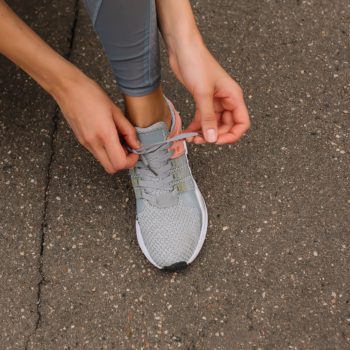
- Better Business
From Sole to Soul: The Definitive Handbook for Crafting Eco-friendly Sneakers
Craft sustainable, vegan sneakers with our comprehensive handbook. Dive into the world of eco-friendly footwear and step lightly with sustainable sneakers.
Life in Lockdown: Three Lessons on Global Unity
Lesson 1: Communicate Urgency
- The brain has a tendency to react strongly to risks that seem novel, uncertain, uncontrollable, and life-threatening --i.e. COVID-19, immediacy
- Even though it already kills people, Climate Change is predominantly seen as a risk to be faced in the future
- Shaping awareness around climate change requires reframing its message
Lesson 2: Elevate the Voices of Trusted Messengers
We are learning valuable lessons from this Public Health Crisis
- Gallup poll rates nurses as the most trusted profession 18 years in a row
- Can the healthcare community can be more vocal on climate change? Think George Mason Program on Climate Change and Health, Hospital Coalitions, etc.
- Pew demonstrated that six-in-ten Americans say scientists should play an active role in policy debates about scientific issues
- Are you tired of hearing 97% of scientists agree on human-caused CC? Clearly that message isn't working.
- Maybe it is time to hear more from scientists directly, rather than politicians, professors and children.
Lesson 3: Localized Scale Works Best
- Simple attainable solutions that can be done from home are essential (i.e. telecommuting, leveraging video conferencing solutions, like Zoom, to facilitate remote work)
- Decentralized response? Perhaps not the most effective, if we had responded sooner to COVID...
- We are hearing from local leaders... In Atlanta, governor and mayor coordinated efforts...encouraged use of hand san and avoidance of public events
- Global Covenant of Mayors, ICLEI, National Council of Local Governments, etc. building capacity at these hyper-local levels for climate action
More to know
- Sacrificing convenience of globalized economy, at least temporarily
- Amazon reducing stock, harder to access consumer goods, like toilet paper
- Low-income, elderly, sick
- People are banding together to help them
Be intentional, coronavirus feels personal
- On NPR, Dan Gilbert, Harvard psychologist, argued that climate change lacks four fundamental features that typically trigger an immediate response: Intentional, Immoral, Imminent, Instantaneous
- Show immediacy w/out compromising integrity
- “With some people, climate change is actually more of an imminent threat. I mean, I'm thinking about farmers who are seeing more ruined crops. I'm thinking about people who live in certain regions that are definitely getting more extreme weather.”
Dig deeper → 8 min
- Better Brands
- Energy and Environment
15 Sustainable and Organic Mother’s Day Gifts to Spoil the Special Women in Your Life
Show the special women in your love and appreciation with these 15 organic Mother's Day gift ideas. Eco-friendly, unique, and sure to be loved!

How Fast Fashion Really Impacts the Environment
You might think that a pair of jeans or a trendy new top has little impact on your carbon footprint, but the fast fashion industry has one of today's most destructive environmental impacts.
Dig deeper → 4 min
7 Ethical & Eco-friendly Dinnerware Brands for Sustainable Kitchens
Explore 7 ethical & eco-friendly dinnerware brands for sustainable kitchens. Discover bamboo, ceramic, and recycled glass tableware from the best sustainable tableware brands.
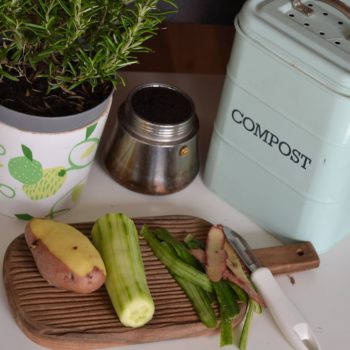
Compostable Materials: Household Items You Can Safely Compost
Learn which household items you can safely compost, contributing to a more sustainable lifestyle.
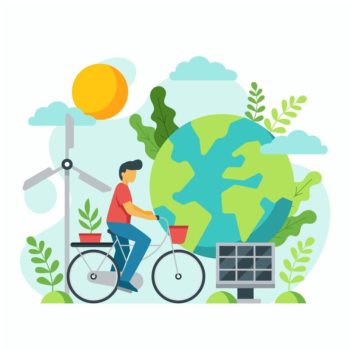
Simple Adjustments You Can Do to Promote a More Sustainable and Environmentally Friendly Society
Learn actionable steps to foster sustainability and protect our planet. Learn how simple adjustments can create a greener, more eco-conscious society.
Top 10 Non Toxic Plastic Free & Sustainable Yoga Mats
Immerse yourself in wellness with our top 10 non toxic plastic free & sustainable yoga mats. Crafted for your well-being and the planet, explore the world of sustainable yoga with our curated selection
Weekly Sustainability News!
By subscribing you agree to our Privacy Policy .

Sustainable Review is copyright material. All rights reserved.

Sustainable Livin’ Looking so Damn Good!!
$1500 worth of eco-stylin’ + Good Conscious
- Skip to main content
- Skip to secondary menu
- Skip to primary sidebar
- Skip to footer
A Plus Topper
Improve your Grades
Eco-Friendly Living And Sustainable Development Essay | Essay on Eco-Friendly Living And Sustainable Development for Students and Children in English
February 13, 2024 by Prasanna
Eco-Friendly Living And Sustainable Development Essay – Given below is a Long and Short Essay on Eco-Friendly Living And Sustainable Development of competitive exams, kids and students belonging to classes 1, 2, 3, 4, 5 6, 7, 8, 9, and 10. The Eco-Friendly Living And Sustainable Development essay 100, 150, 200, 250, 500 words in English helps the students with their class assignments, comprehension tasks, and even for competitive examinations.
You can also find more Essay Writing articles on events, persons, sports, technology and many more.
Long Essay on Eco-Friendly Living And Sustainable Development 500 Words for Kids and Students in English
“Treat the earth well. It was not given to you by your parents. It was loaned to you by your children.”
The above quoted Kenyan proverb aptly marks the pungent need of the hour, i.e. ‘sustainable development’ and ‘eco-friendly living style.’
Eco-friendly or ‘going green’ is the latest way of life. ‘Eco-friendly’ refers to those goods and services which are considered to have negligible or no harm on the environment.

Sustainable development refers to a system which uses resources in such a way as to preserve the resources for both present and future generations. ‘Using of alternative and renewable resources of energy’ and ‘conservation’ are two aspects of sustainable development. ‘Rain water harvesting’, ‘saving trees’, ‘conserving energy’, etc. are modes of sustainable.
Some of the most important natural resources are limited and non-renewable like fossil fuels, etc.
The need and desires of human beings are ever increasing so there is an increasing trend in demand for natural resources. Hence, the natural resources are depleting at a rapid pace.
According to the various scientific studies, the natural resources would soon deplete completely. And result will be no power and total blackout and collapse of sophisticated lifestyle and activities of mankind.
Not only the depletion of natural resources but also awareness about the environmental degradation has led the society to look for alternative resources which are both eco-friendly and renewable at the same time.
In a bid to save environment, more and more people are opting for eco-friendly goods and services. There are host of eco-friendly goods and services available these days. To save non-renewable resources, alternative resources of renewable energy are being used. Hydro power, solar energy, biomass energy, geothermal energy, oceanic energy, etc. are being used as they all are natural, eco-friendly and renewable sources of energy.
Societies world over have become more aware about the alarming depletion of resources and environmental degradation. Hence, minimising use of plastic bags, using natural fabrics like khadi, jute, cotton, use of paper bags, jute bags, use of CNG, banning use of poisonous chemicals as DDT, use of eco-friendly furniture, paints, etc. are the need of the hour. Even eco-friendly services like ‘eco-health’ and ‘eco-tourism’ are much in demand.
It is good to see these welcome modifications happening in our lifestyles and habits. Eco-friendly living and sustainable development are surely two of much needed novice ways to save our mother earth. And this again is good for us and for our comfortable survival on earth. It is our turn now to contribute our bit to mother earth by adopting measures of eco-friendly living and sustainable development.
- Picture Dictionary
- English Speech
- English Slogans
- English Letter Writing
- English Essay Writing
- English Textbook Answers
- Types of Certificates
- ICSE Solutions
- Selina ICSE Solutions
- ML Aggarwal Solutions
- HSSLive Plus One
- HSSLive Plus Two
- Kerala SSLC
- Distance Education
- Sustainable
- Energy Economy
- Energy Services

26 Eco Friendly Lifestyle Practices for Day-to-Day Life

Adopting an eco-friendly lifestyle isn’t just for the environmentally conscious, it’s a responsibility we all share. Simple daily practices like reusing, recycling, and opting for sustainable products can collectively make a significant impact in preserving our planet for current and future generations.
Eco-Friendly Lifestyle Practices for Day-to-Day Life
Incorporating eco friendly lifestyle means living in a way that doesn’t hurt the environment. This is really important because we want to keep our planet safe from harm caused by humans. There are lots of ways each person can make small changes to their everyday routines to help reduce the bad impact we usually have on the Earth.
We can be eco-friendly in different parts of our lives. These are some eco friendly lifestyle tips you can follow:
Tip 1: Use Renewable Energy for Electricity

Solar panels, also known as solar photovoltaic (PV) setups, turn sunlight into electricity using special cells. This lets you create your own eco-friendly power, reducing carbon emissions significantly.
Once set up, solar panels are emission-free, noiseless, and don’t pollute the air, benefiting local air quality and health.
You can pair solar panels with electric heating, like heat pumps, for clean warmth and hot water.
Adding batteries to your solar setup stores energy for any time use, making you independent of fossil fuels during outages or when the sun isn’t shining.
Tip 2: Use Energy-Efficient Lighting
Energy-efficient light bulbs last up to 12 times longer than traditional ones, giving the same quality of light with much less energy. Traditional bulbs waste 80% of their energy as heat , while LED bulbs are 80-90% energy-efficient. There are many benefits of LED lighting on the environment .
Tip 3: Use Smart Thermostats
Smart thermostats are a quick way to improve home efficiency. These Wi-Fi-enabled devices can be controlled remotely from smart devices and work with various heating and cooling systems. They learn your preferences and adjust temperatures based on outside conditions, even turning off when you’re away and back on before you return. This helps cut energy usage, reducing costs and reliance on fossil fuels.
Also See: What Temperature to Set Air Conditioner in Winter?
Tip 4: Choose Local Produce

Fresh food usually travels about 1,500 miles before we purchase it. These long journeys result in emissions from transportation, refrigeration, and production.
You can avoid this by buying from local producers when possible. Local food networks are more resilient and offer more choices during shortages. Seasonal local produce is more nutritious as it spends less time in transit. In contrast, international produce is often grown to last longer, which can lower its nutritional value. This is a great eco-friendly practice in day to day life.
Tip 5: Limit Your Food Waste
In 2018, the UK generated 9.5 million tonnes of food waste , equal to 25 million tonnes of greenhouse gas emissions. Households were responsible for 70% of this waste, leading to higher emissions from greater industrial production and transportation.
To reduce household food waste, portion meals sensibly, purchase only what’s needed, and use food waste as fertilizer for soil and plants. This can be among the best eco-friendly practices in day-to-day life.
Tip 6: Cut Down on Meat Consumption
Meat and dairy products account for a considerable amount of the greenhouse gas emissions in agriculture.
Emissions happen during production, processing, packaging, and transportation. Farming releases strong greenhouse gases: methane from livestock digestion, and Nitrous Oxide from organic and mineral nitrogen fertilizers.
Since the main emissions come from producing and preparing meat and dairy, eating less meat can help reduce greenhouse gases . While some people choose a vegan diet, even just decreasing meat consumption can make a significant difference.
Tip 7: Donate Perishable Food Before Travel

Before you head off on vacation, take a moment to inspect your fridge for any soon-to-expire food. If you can, use it before it goes bad. If not, consider donating it to those who could use it instead of letting it go to waste.
Tip 8: Choose Eco-Friendly Transportation
If you care about the environment and want to cut down on carbon emissions, consider leaving the car behind, start biking or walking, and use public transportation. When more folks use buses or trains, there are fewer cars on the road and less pollution. You can also opt to carpool with friends or coworkers. Begin by running a few errands on weekends and gradually increase the time you spend without using your car.
Tip 9: Go for Electric Vehicles
Diesel and petrol cars add to global warming by releasing a lot of CO2. In 2019, transportation caused 27% of the UK’s emissions , and out of this, 91% was from vehicles on roads.
Incorporating electric cars into our daily lives is a great way to embrace eco-friendly lifestyles. They don’t need regular fuels and they don’t make the air dirty . They don’t create bad gases or particles.
Hybrid cars are a bit different. They use both regular fuel and a special electric engine powered by a battery. Plug-in hybrids mostly use the electric part first, and then switch to the regular engine when needed.
Also Read: Debunking the Top 10 Myths About Electric Cars: Separating Fact from Fiction
Tip 10: Reduce Air Travel

Aviation emissions might use up a significant portion of the carbon budget left to limit global warming to 1.5 degrees. In the aviation sector, fast and effective decarbonization options are limited, so the most effective approach to lowering emissions is to personally cut back on flights. This is especially important until sustainable aviation becomes a practical and widely available choice.
Train travel is becoming an increasingly attractive and cost-effective option , as new rail networks are growing across Europe.
Tip 11: Opt Out of Cruise Vacations
Cruise holidays are on the rise in popularity. However, these large ships greatly add to greenhouse gas emissions. For example, in 2017, Carnival Corporation’s fleet of 47 cruise ships emitted 10 times the amount of sulfur oxides (SOx) compared to 100 million cars.
Being mindful of your holiday’s impact on the environment is essential. Whenever you can, choose more environmentally friendly vacation options.
Tip 12: Practice Eco-Friendly Travel
Since the pandemic, people have become more conscious of their impact on culture, economy, and environment when traveling. More travelers are now embracing eco-friendly tourism. This means minimizing their carbon footprint while on trips , being thoughtful with spending, and supporting the natural environment they visit. Thus, it is a fantastic approach to adopting eco-friendly lifestyles.
This approach helps prevent over-tourism, which disrupts local life through rising housing costs and commercializing traditions. Pollution, especially excess waste, damages natural sites and depletes resources like water, soil, and biodiversity.
Consider these eco-tourism tips for your next trip:
- Use reusable containers instead of disposable ones.
- Carry a reusable bottle.
- Choose local-focused tour operators.
- Travel during off-peak seasons.
- Opt for less crowded destinations.
- Dispose of waste responsibly.
- Use public transportation.
- Stick to designated paths.
- Save energy at accommodations (shorter showers, less AC).
- Support local businesses.
- Use environmentally friendly travel products.
Also See: Different Types of Micromobility Revolutionizing Urban Travel
Tip 13: Choose Environmentally-Friendly Accommodation

When seeking lodging abroad, it’s crucial to opt for places that prioritize sustainability in their operations. One effective approach is to opt for accommodations that hold a Green Key certification. This is an excellent method for embracing eco-friendly lifestyles.
To earn Green Key certification, establishments must meet 13 specific criteria. This certification signifies that the accommodation respects local cultures, cares for the environment, and treats its staff fairly.
Additionally, check out these 7 Best Eco Friendly House Designs.
Tip 14: Disconnect Electronics Before Traveling
Even when turned off or in sleep mode, electronic devices still consume energy. Leaving them plugged in while away for an extended period wastes energy that could be saved by unplugging. So, before your vacation, remember to disconnect your devices from the outlets to conserve electricity.
Tip 15: Travel with Minimal Luggage
Air travel creates emissions regardless. But if flying is necessary, packing light can help reduce pollution . The less luggage a plane carries, the lower the fuel consumption during the flight.
Tip 16: Use Paper Wisely

In today’s digital age, we can cut down on paper by storing information on our computers instead of printing it. This helps the environment. You can also use less paper by tearing a corner for notes instead of scribbling in the middle.
The rest of the paper can still be used for other writing. Using less paper conserves energy used in production, reduces tree cutting, and promotes a green lifestyle. This is among the best eco friendly practices for day-to-day life.
Also See: How to Reduce Carbon Footprint as a Student in School or College
Tip 17: Say No to Disposable Plastics
Have you noticed plastic straws, utensils, and bags everywhere you look? Plastic is everywhere, but you can make choices to reduce it.
Choose reusable options , like canvas bags for groceries and metal straws for drinks. A huge amount of plastic waste ends up in the environment, especially in the oceans. Cutting down on plastic use is a great way to help the environment. Make this a big part of your eco friendly lifestyle.
Tip 18: Apply the 3 R’s Waste Hierarchy
Applying the 3 R’s (Reduce, Reuse, Recycle) is a smart strategy to decrease waste and enhance waste management methods.
Reducing involves producing and consuming less, while reusing means finding new uses for items instead of throwing them away. Recycling transforms materials into new raw materials for creating new items.
By adopting these 3 Rs, you reduce manufacturing demands and contribute to environmental preservation. They are really pivotal for an eco friendly lifestyle.
Cross-Reference: How can a green lifestyle improve happiness?
Tip 19: Choose Recycled Goods

When shopping, aim for products with minimal packaging and those crafted from recycled materials . Check the label for recycled content or if plastics/chemicals were used in making it.
If possible, consider repairing instead of replacing items. The internet offers tools and guides to fix nearly anything, be it batteries, paper, or even cars.
Also Read: Upcycling Plastics to Convert it into Useful Soap
Tip 20: Save Water and Recycle It
Water, a natural resource, should be preserved. The energy to pump water from rivers or lakes to homes is significant. Preserving water reduces this energy demand .
Methods to save water include taking shorter showers, repairing leaks, turning off taps while brushing teeth, reusing household water, using water-efficient appliances, and collecting rainwater in barrels for lawn irrigation.
You can also recycle water. Water recycling means using treated dirty water for useful things like watering plants, in factories, flushing toilets, mopping, car washing, and refilling underground water supplies. This helps save resources and money. This is an appreciable eco friendly lifestyle habit.
Also See: Why Fill Bathtub With Water During a Power Outage?
Tip 21: Reduce Clothes Washing Frequency
Synthetic fabrics release tiny bits of plastic (microplastics) in washing machines , which end up in the ocean. The seabed holds more than 14 million tonnes of these microplastics, and the amount is growing due to textiles adding around 500,000 tonnes each year. Around 16% of ocean microplastics come from washing synthetic clothes. These harmful fibers harm ecosystems and are eaten by sea creatures and eventually humans.
Washing clothes too often and in hot water can damage their quality and is wasteful in terms of water and energy. Moreover, choose non-toxic detergents and avoid excessive use of tumble dryers . This is a great eco-friendly lifestyle habit you can adopt.
Tip 22: Avoid Discarding Usable Clothes

The world produces around 92 million tonnes of textiles every year. When these clothes are discarded, they end up in landfills. They can take centuries to break down and release greenhouse gases.
Ultra-fast fashion, an offshoot of fast fashion, has appeared as online stores churn out thousands of new items daily. Engaging in these rapid trend cycles encourages excessive consumption.
To extend the life of your clothes, consider simple alterations or repairs . Vintage and second-hand stores offer affordable alternatives, often with similar clothing items.
When buying new clothes, choose quality items that will last. Research sustainable brands that minimize production impact and are transparent about their supply chains.
Tip 23: Prevent Littering
A common sight we witness daily is people throwing trash on the streets. An effective approach to maintaining a clean environment is to discourage littering. Instead, educate them to use trash bins. Accumulated garbage mars the city’s appearance and adds to air pollution.
Tip 24: Grow Trees and Start a Home Garden
Nurture trees for oxygen, fruits, and habitat. They purify air, prevent erosion, and reduce energy use . Plant young trees near your home and avoid needless cutting. Cultivate edible herbs and plants in small spaces for fresh produce and reduce carbon footprint. A shaded yard with trees minimizes energy consumption. Merge these actions for a greener, eco-friendly life.
Also See: Sustainable Impact of Solar-Powered Irrigation on Sub-Saharan Small Farms
Tip 25: Use Non-Toxic Beauty Products

Use safe and environment-friendly beauty items for your skin and the planet. This serves as a great way to welcome eco-friendly lifestyles. These products are free from harmful stuff like chemicals, parabens, and genetically modified ingredients. Don’t go for synthetic makeup brands.
Also See: Is PVC Biodegradable: Unveiling the Environmental Impact
Tip 26: Use Eco-Friendly Products
Helping the planet might seem like a superhero task, but you can make a difference by doing small things every day. Like using eco-friendly products instead of regular things.
1. Toothbrushes

Toothbrushes are now available from many companies with bamboo handles and bristles made from castor seed oil. They’re durable like plastic toothbrushes and often come with plant-based packaging. Using them also eliminates the potential exposure to Bisphenol-A (BPA) , a chemical that can be harmful and is sometimes found in plastic toothbrushes, contributing to human infertility.
The situation is similar with straws. Despite their size, plastic straws can create significant issues in large quantities. They also include harmful chemicals called polypropylene , which can dissolve in water and disrupt human hormones. Worldwide, individuals are increasingly abandoning plastic straws. You can become part of this global effort by using reusable stainless steel straws or by choosing eateries that provide biodegradable options like straws made from organic materials such as dried coconut leaves. Paper straws are also a good choice.
3. Containers
You can choose a reusable glass or stainless steel food container for carrying your lunch to work or school. This choice lowers the chances of BPA, phthalates, PVS, and lead contamination. If you opt to purchase food instead of packing from home, seek out restaurants that utilize eco-friendly packaging materials.
Also Read: Is Non PVC Cling Film Biodegradable?
4. Shopping Bags

When it comes to shopping bags, bioplastics offer an alternative option . These bags decompose faster because they’re crafted from natural materials, often derived from food processing leftovers. Alternatively, you can opt for reusable shopping bags. Tote bags are quite popular these days, allowing you to stay stylish while also contributing to environmental preservation!
5. Eco-Friendly Jewellery
If you enjoy wearing jewelry, think about getting recycled gold jewelry . It’s good for the Earth and reduces the need for new gold mining.
6. Sanitary Napkins
Menstruation was a topic avoided in public discussions for a long time. This led to some women lacking knowledge about proper menstrual hygiene and sanitary napkin disposal. Opting for organic sanitary napkins not only benefits the environment but also offers a safer option for your health due to fewer additives and dyes.
7. Batteries
Batteries are now crucial in many households. However, their composition of various chemicals can lead to pollution when disposed of improperly. This issue can be addressed (while also being cost-effective) through the adoption of rechargeable batteries . Although they have a slightly higher upfront cost and require an initial investment in a charger, the long-term savings are substantial, all while contributing to environmental preservation.
Also See: 22 Best Solar Products For Everyday Life
8. Eco-Friendly Cleaning Products

Many common cleaning products include detergents, preservatives, or foaming agents composed of toxic chemicals. These chemicals often flow into streams and rivers, causing water pollution that harms ecosystems and biodiversity.
Transitioning to products made from sustainably sourced ingredients and avoiding synthetics lowers the threat of encountering harmful chemicals, benefiting both human health and the environment.
Creating your own natural cleaners using vinegar, lemon juice, and baking soda is another simple choice. By doing so, you can effectively approach the adoption of eco-friendly lifestyles. This sustainable and cost-effective alternative minimizes toxic chemicals and reduces packaging waste in your household.
Also Read: How the World’s Whitest Paint Could Make a Difference
9. Using Biodegradable Household Products
You can’t control the fate of items you dispose of, but you can choose products made from natural, non-synthetic ingredients that are biodegradable. These products break down through bacterial and fungal action, ensuring they don’t harm the environment when they interact with nature.
Examples of such eco friendly things include:
- Recycled toilet paper
- Shampoo with natural ingredients
- Natural deodorant
- Washcloths crafted from hemp or agave fibers
Incorporating eco-friendly practices into daily life and motivating friends and family to implement the same is important. From adopting renewable energy to reducing waste making mindful decisions can pave the way for a healthier planet. For more sustainability-related content, keep visiting our website.
Source : How to become eco-friendly: Simple steps for living a more eco-friendly lifestyle

Olivia is committed to green energy and works to help ensure our planet's long-term habitability. She takes part in environmental conservation by recycling and avoiding single-use plastic.
Related Posts

Wangari’s Trees of Peace: Girl Got Noble Prize for Planting Trees

15 Best Zero Waste Fashion Brands

Zero Waste Fashion Importance, Techniques, and Examples
Save my name, email, and website in this browser for the next time I comment.
Type above and press Enter to search. Press Esc to cancel.
Transform Your Life: The Ultimate Guide to Sustainable Lifestyle
Sustainable living is a lifestyle choice that serves the environment and our communities. It’s about living consciously, reducing waste, conserving resources, and adopting practices that benefit all of us. We all have an obligation to ourselves and future generations to make sure we live sustainably; it’s crucial for preserving the planet and creating a better world for everyone. Here, I want to share some tips on how to live a sustainable life – one that does good for your neighbours, environment, and yourself!
Living sustainably doesn’t mean making drastic changes or sacrifices; small daily choices increase over time. You don’t need to be perfect to embrace sustainability – little daily steps can make all the difference. From cutting down on plastic use to eating local produce, there are plenty of simple ways to practice sustainability without overhauling your entire life.
Through this article, I hope to guide how easy it is to start living more sustainably while reaping its many benefits – from saving money to feeling connected with nature and the community. Join me as we explore sustainable living and learn how to incorporate these values into our everyday lives!
The term “sustainable lifestyle” creates an image of peaceful coexistence between humans and the environment, where we can all thrive in harmony. It is rooted in the idea that living sustainably reduces our negative impact on the planet while providing us with everything we need to lead happy lives.
Sustainable living means creating a balance between our needs and those of future generations so that resources are not depleted faster than they can be replenished. This includes taking action such as reducing energy consumption, utilizing renewable sources, conserving water, buying locally grown food, composting organic waste, and more. Achieving sustainability involves making conscious decisions and changes throughout every aspect of life – from how meals are prepared to what kind of transportation is used for commuting to work or leisure activities.
In short, when it comes to lifestyle sustainability, it’s about being mindful of how actions today could affect tomorrow. We must think beyond ourselves and recognize the importance of preserving natural resources for future use; this will ensure everyone has access to clean air and water for many years. With thoughtful consideration of these aspects of daily life, we can make strides toward establishing a greener world for all who inhabit it.
Benefits Of Sustainable Living
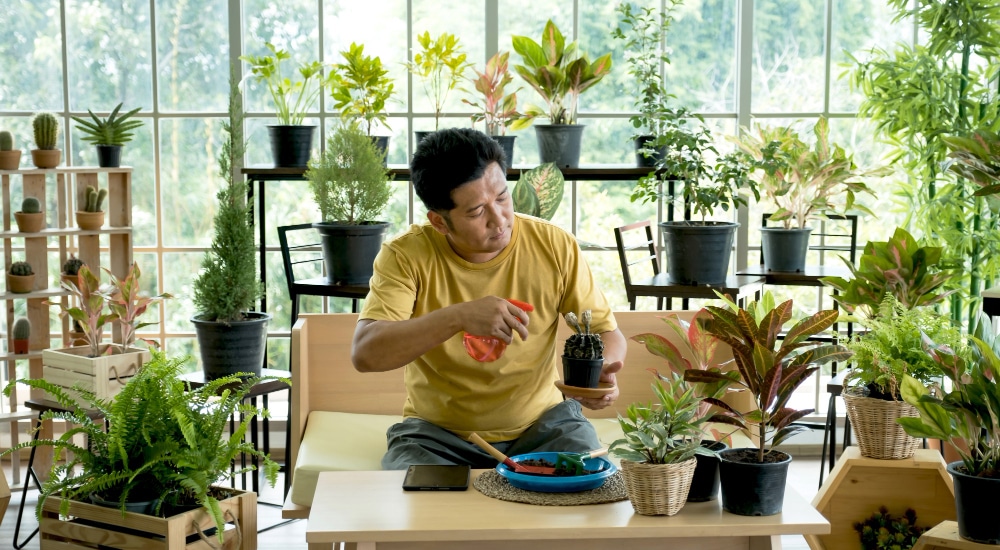
Sustainable living offers a plethora of benefits for both people and the planet. Reducing our emissions can help protect natural resources and reduce our carbon footprint to ensure a healthier environment for future generations. Through green living practices, we can also save money while supporting more ethical production cycles that are better for workers and local communities.
The first benefit of sustainable living is reduced environmental impacts. We all should limit our adverse effects on the environment, and by making conscious choices about what we consume and how much energy we use at home or work, we can ensure that our impact is minimal. This includes reducing water usage through efficient appliances, swapping out single-use products with reusable ones, improving air quality with plants indoors and outdoors, using non-toxic cleaning supplies whenever possible, and composting organic waste instead of sending it to landfills – these small changes add up!
The other great thing about adopting eco-friendly habits is that they often lead to cost savings over time. Conserving energy leads to lower electricity bills; growing one’s food saves money spent on groceries; repurposing items like furniture or clothing reduces costs associated with buying new things; investing in renewable energy sources such as solar panels help you generate your power – this way you’re not only helping the planet but also lessening financial burdens on yourself!
These two factors alone show us why sustainable lifestyle practices should be adopted into our everyday lives: They’ll improve the health of the world around us while keeping more money in our pockets. With such compelling reasons to go green, let’s explore some eco-friendly practices for home and work that will help create meaningful change in the long run.
Eco-Friendly Practices For Home And Work

At first, making eco-friendly changes to your home and work life may seem daunting. But with a few simple steps, you can go to green living and environmental stewardship.
Minor changes are often the most effective eco-friendly practices for home and work. Simple things like turning off lights when leaving a room or switching out traditional light bulbs for LED versions can help reduce energy consumption significantly. Unplugging electronics that aren’t being used also helps conserve electricity usage and save money in the long run.
In addition to reducing energy use, sustainable practices such as recycling, composting, using reusable containers instead of disposable ones, and opting for products made from recycled materials are all great ways to make an impact. Sustainable shopping habits by avoiding single-use items like plastic bags or water bottles are another critical factor in leading a greener lifestyle.
With these easy tips, anyone can start toward sustainability today!
Sustainable Shopping Habits
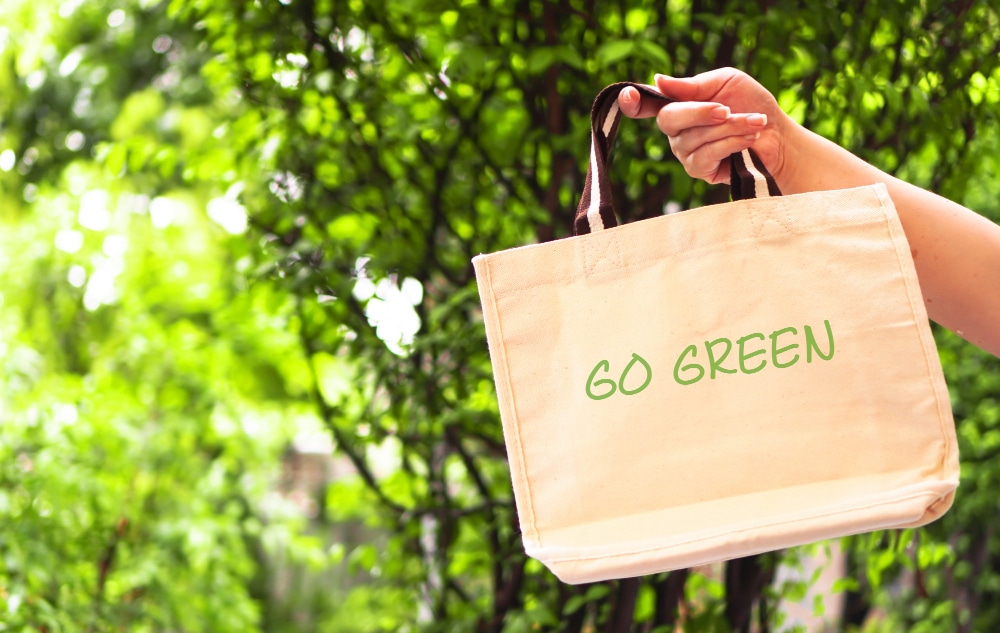
Now that you’ve got a good understanding of the eco-friendly practices to use at home and work let’s look into sustainable shopping habits. Shopping sustainably is essential to an eco-conscious lifestyle because it helps reduce our environmental footprint. Here are some tips for making ethical and green shopping choices:
- Sustainable Shopping – Choose products made from natural materials like organic cotton or bamboo, shop secondhand when possible, and buy items with minimal or biodegradable packaging.
- Ethical Shopping – Shop from companies with fair labor policies, create quality products with minimal waste, and prioritize sustainability over profit.
- Green Shopping – Buy locally produced goods whenever possible instead of imported items, avoid single-use plastics wherever possible, opt for refillable containers instead of disposable ones, and purchase energy-efficient appliances.
When it comes to fashion specifically, there are many ways to make more sustainable choices, such as buying secondhand clothes or investing in quality pieces that will last longer than fast fashion trends. Additionally, opting for conscious brands that emphasize sustainable fabrication processes can help contribute to positive changes within the industry while still being fashionable! With all these options at your fingertips, you’ll be able to find clothing that fits both your style and values perfectly.
Taking these steps towards responsible consumption benefits the environment and makes us more aware consumers, ultimately leading to better decision-making when it comes time to hit the stores. Our purchasing power greatly influences what types of products businesses decide to produce, so being mindful about where we put our money can go a long way toward creating real change in this world. With sustainable shopping habits under our belt, let’s explore how to minimize our carbon footprints through sustainable food choices…
Sustainable Food Choices
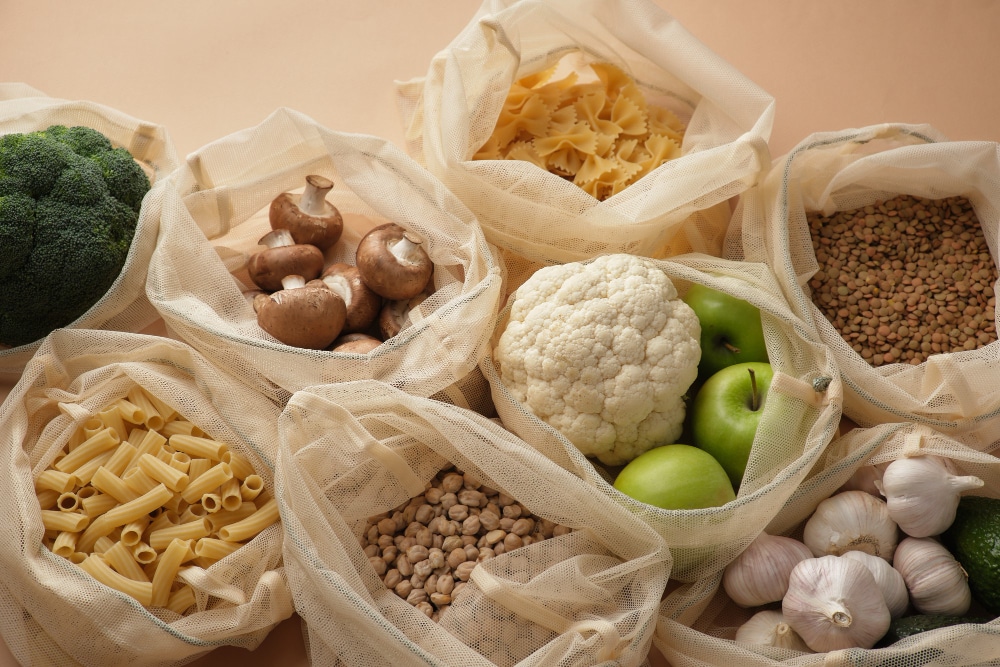
Many of us make food choices that are not always in our best interests. We may eat too much processed food or choose fast foods over healthier options. However, if we want to move towards a sustainable lifestyle, we need to consider the impact of what we put into our bodies. Sustainable food sources such as organic produce from local markets and plant-based diets can help reduce the environmental effects of traditional farming methods while still providing essential vitamins and minerals.
When considering which foods to buy, look for those labeled ‘organic’ or grown without chemical pesticides or fertilizers. Not only do these foods contain fewer toxins, but they also support ethical production practices and animal welfare standards on farms. Additionally, try buying locally sourced products whenever possible – this ensures you get fresh fruits and vegetables while supporting your community simultaneously!
Finally, eating a more plant-based diet is one of the simplest ways to reduce your overall carbon footprint. Eating less meat helps conserve water resources and reduces emissions associated with livestock production. Plus, there are so many delicious plant-based recipes out there that even dedicated carnivores will find something to love! With all these options available, it’s easy to start making better food choices today for a healthier planet tomorrow.
Waste Reduction Strategies
Now that we have explored sustainable food choices let’s look at waste reduction strategies to further our journey towards a zero-waste lifestyle. We must explore the usage and adopt composting practices at home to reduce the pollution of single-use plastics.
To achieve this goal, exploring sustainable packaging solutions such as biodegradable containers and reusable bags when shopping for groceries or ordering takeout is essential. Additionally, upcycling ideas can be implemented into everyday life by repurposing items like glass jars and containers for storage instead of buying new products all the time. This not only helps with cutting back on spending but also reduces waste production.
We can also avoid using disposables whenever possible such as opting out of straws or bringing our cups while frequenting coffee shops and restaurants. Furthermore, participating in clothing swaps or thrift store donations are great ways to give gently used clothes another life rather than throwing them away after one use. With these simple changes, we can help create a cleaner environment for generations ahead!
With these techniques in mind, let’s focus on exploring renewable energy sources…
Renewable Energy Sources

A sustainable lifestyle can be achieved by utilizing renewable energy sources. We are fortunate to have access to abundant green power, from solar and wind to hydroelectric and geothermal. Solar energy is the most popular form of renewable energy; panels installed on rooftops, yards, or ground level convert sunlight into usable electricity. Wind turbines generate electricity via large airfoils that transform kinetic energy into electrical power. Hydroelectric power utilizes flowing water to turn turbines which then create electricity. Geothermal systems tap heat stored beneath Earth’s surface as a heating source in homes and businesses.
Renewable energies are better for our environment than traditional power sources like coal and gas. They also enable us to save money through lower utility bills and reduce dependence on unsustainable resources. On top of that, harnessing clean energy allows people to positively impact their communities and empower others with knowledge about sustainability.
The potential for using renewable technologies is vast – all we need is the awareness and action necessary to take advantage of it! With more research, innovation, education, policy support, and investment in green technology options, we can move closer to creating a world powered solely by clean energy sources. To continue this journey toward sustainability, let’s now discuss ways to conserve water…
Water Conservation Tips

Having discussed renewable energy sources and their importance to sustainable living, it’s time to consider ways to conserve water. Water conservation is essential to creating a sustainable lifestyle – not only because it reduces our reliance on natural resources but also because it helps us save money in the long run. Here are some tips for reducing your water usage:
First, install low-flow fixtures such as showerheads and faucets designed with water efficiency in mind. These products use less water than traditional models while still providing adequate performance. Additionally, consider installing dual flush toilets that allow you to choose between a full or reduced flow when flushing. This can help reduce your home’s water consumption by up to 50%.
Second, look for opportunities around the house to save water without sacrificing convenience or comfort. For instance, take shorter showers, turn off the tap when brushing teeth or washing dishes, collect rainwater for watering plants or filling pools, and fix any leaks in pipes or fixtures as soon as they crop up. All these small changes add up!
Finally, educate yourself about local watershed issues to understand how individual actions like yours affect the environment over time. Investing time into learning more about where your drinking water comes from – and taking steps to protect its source – will go a long way toward ensuring clean access for future generations. With this knowledge, we’ll be prepared to make informed decisions about transportation alternatives.
Transportation Alternatives
The transportation sector is a significant source of pollution and greenhouse gas emissions, but luckily there are many sustainable alternatives to driving. As environmental consciousness grows, so does the number of bike-sharing programs, electric cars, carpooling opportunities, public transportation networks, and ride-sharing services. By investing in these options, we can make tangible progress toward creating a more sustainable future for ourselves and our planet.
One example of this trend is the rise of electric vehicles as an alternative to traditional gasoline-powered models. Not only do they offer reduced emissions compared to their counterparts, but also lower running costs due to improved fuel efficiency. Additionally, electric cars often come with incentives such as tax credits or subsidized charging stations that further reduce the cost barrier associated with owning one.
Furthermore, ride-sharing companies like Uber and Lyft have become popular transportation solutions over the past decade. These services allow individuals to easily connect with drivers who will take them wherever they need to go without having to own a car themselves or rely on public transport systems. This offers convenience while reducing traffic congestion and air pollution simultaneously.
Utilizing these modes of transportation instead of single occupancy vehicles can limit our environmental impact while contributing positively to society’s sustainability goals. By supporting green initiatives like this, we can create a better world for future generations by minimizing our collective carbon footprint today. With this in mind, we must start building supportive communities with similar values regarding protecting our planet from climate change.
Building A Supportive Community

Building a supportive community is crucial for living an eco-friendly lifestyle. A sustainable community should be conscious of its environmental impact and strive to reduce it in every way possible. Sustainable cities, green living, and sustainable products are part of that effort.
One great way to create a supportive community is by connecting with like-minded individuals who share the same passion for sustainability as you do. Reach out to local organizations or businesses that promote eco-friendly lifestyles. Get involved in activities such as volunteering at cleanups, supporting green initiatives, or attending educational seminars about sustainability topics. You can also join online forums where people discuss ideas on how to live sustainably. This will help build relationships and give you greater insight into the global conversation surrounding sustainable lifestyles.
By building a solid support system around you, you’ll have access to resources and advice from those who understand your commitment to creating a better future through green living. It’s not only beneficial but inspiring too! Together we can make the world more sustainable one step at a time; let’s start today!
Frequently Asked Questions
How much money can i save by living a sustainable lifestyle.
Living a sustainable lifestyle can be incredibly rewarding, both financially and emotionally. It’s no secret that switching to eco-friendly practices saves money in the long run – but how much? Well, it all depends on your approach and dedication. With careful planning and dedication to living an environmentally conscious life, you could save hundreds or thousands of dollars each year.
The first step is to look for ways to save energy costs with renewable sources like solar panels or wind turbines. Depending on where you live, government incentives may also be available to encourage homeowners to make more sustainable choices. This could result in significant savings over time and reduce your carbon footprint. Additionally, when shopping for appliances and other home goods, try looking for Energy Star-certified items designed to use less electricity and water than their non-certified counterparts.
Finally, get creative! Look into using natural resources like rainwater harvesting systems instead of traditional methods such as municipal water supplies. Planting native plants in your yard can reduce watering needs and provide habitat for local wildlife while adding beauty to your outdoor space. All these small changes add up quickly; adopting a few simple strategies now will pay off handsomely down the road.
So if you’re ready to save big bucks by living sustainably, why wait? Take the plunge today and join millions worldwide who have already made the switch – your wallet (and planet) will thank you later!
What Type Of Renewable Energy Sources Are Available To Me?
Living a sustainable lifestyle is an important way to save money, reduce environmental impact, and create a better future for future generations. One of the best ways to achieve this goal is using renewable energy sources. Let’s look at available options to help you make informed decisions about these green energy sources.
When it comes to renewable energy sources, many different technologies and systems can be implemented. For example, solar power involves installing photovoltaic cells on rooftops or other suitable locations to capture sunlight and convert it into electricity. Wind turbines also allow homeowners to generate their electricity from the wind. Other renewable energy sources include biomass fuels such as wood pellets, geothermal heating and cooling systems, hydropower plants using flowing water, and tidal power generated from waves hitting shorelines.
The benefits of using renewable energy sources instead of traditional fossil fuels extend beyond reducing your carbon footprint– they can save you money too! Here are four key advantages associated with investing in green energy sources:
- Lower long-term costs – Renewable energies typically have lower upfront costs than nonrenewables due to government incentives. Over time, they will cost less since you won’t need to pay for fuel like oil or gas anymore.
- Increased property value – Installing solar panels or wind turbines could increase the overall value of your home if done correctly by qualified professionals.
- Tax credits & rebates – Government programs often provide tax credits and rebates for those who invest in green energy solutions, which helps offset initial installation costs even more.
- Reduced dependence on foreign oil – By relying on renewable energies rather than imported petroleum products, individuals can lessen their reliance on unstable geopolitical regimes worldwide while helping local economies thrive through increased employment opportunities created by clean technology investments.
These are just a few examples of how living sustainably can positively affect our environment and our wallets over time! Whether you’re looking for ways to decrease emissions or want to save money on utility bills each month, considering renewable energy sources is worth exploring further.
Are There Any Government Incentives For Sustainable Living?
It’s no secret that living sustainably is vital to preserving our planet and reducing our carbon footprint. But have you ever considered government incentives available to those who choose sustainable lifestyles? There are several ways in which governments can help us reduce water consumption, switch to renewable energy sources, and lessen our impact on the environment.
To illustrate this point, let’s think of an old-fashioned sailing ship – its sails slowly taking it across oceans with little more than wind power as fuel. This type of transportation involves minimal resources, making it both efficient and environmentally friendly. In many respects, today’s incentives for a sustainable living work similarly: they provide a way for people to save money while also helping protect the planet.
From tax credits to financial assistance programs, numerous initiatives designed by governments worldwide offer support to those looking to live more sustainably. For example, countries like Germany offer generous subsidies for solar panel installation; some US states provide grants for businesses transitioning into green manufacturing processes; and utility companies often discount electricity bills when customers install energy-efficient appliances or use renewable sources such as solar or wind power.
In short, if you want to make your lifestyle greener and help preserve our planet simultaneously, there are plenty of options! It pays (literally) to research what kinds of government incentives may be available in your area so that you can take advantage of them and start saving money while doing something good for the environment.
What Are The Best Strategies For Reducing My Carbon Footprint?
Reducing your carbon footprint is an essential step in becoming more sustainable. We all know that climate change is one of humanity’s biggest challenges, and it’s up to us as individuals to do our part in combating it. Many strategies exist for reducing carbon emissions and leading a more eco-friendly lifestyle.
One of the best ways to start living sustainably is by shifting to carbon-neutral transportation options such as electric vehicles or bicycles. If you don’t have access to these types of transportation, consider carpooling with friends or family members when possible. Public transit, like buses and trains, can also be utilized in your area.
Another great way to reduce your carbon footprint is by investing in green energy sources at home. You could look into solar panels, wind turbines, or other renewable energy sources, which can help save money on electricity bills while also helping protect the environment. Small changes, such as switching out light bulbs for LED models, can make a big difference over time. Eco-friendly housing solutions such as double-glazed windows, insulation, and energy-efficient appliances should also be considered to reduce your environmental impact further.
The key takeaway is that we can take many simple steps towards living more sustainably – from choosing sustainable transportation methods to investing in green energy solutions at home – each one will add up and contribute significantly towards creating a healthier planet for future generations!
How Can I Reduce My Water Consumption Without Sacrificing Comfort?
Irony can be a powerful tool when it comes to encouraging sustainable living. We often think of reducing our water consumption to help the environment, but how do we accomplish that without compromising comfort? The answer is simple- by using efficient water conservation practices!
Water efficiency and usage reduction are key elements in achieving sustainability goals. It doesn’t take much effort or money to achieve these objectives, either – small changes can make a big difference. For example, you could switch out your old showerhead for an efficient one with low flow rates, reducing the amount of water used per minute while still providing adequate pressure. You could also use rain-collecting barrels to capture runoff from gutters and roofs instead of relying solely on municipal sources. This would give you access to free clean water while at the same time helping conserve this precious resource.
In addition, there are many other ways to save water around your home, such as fixing any leaks or drips right away, installing aerators on faucets, running full loads in washing machines and dishwashers, limiting baths/showers, and making sure not to leave taps running unnecessarily. All these combined will add up over time and contribute towards conserving more water.
So next time you think about reducing your carbon footprint by decreasing your water consumption, remember: it’s easier than you might think! Plenty of methods available don’t require sacrificing comfort and will ultimately lead to less waste and improved environmental health for everyone involved. So why wait? Start taking action today!
Living a sustainable lifestyle doesn’t have to be complex or expensive. It can save you money in the long run while also allowing you to make an environmental difference. Many renewable energy sources are available, and government incentives can help cover costs, so it’s worth looking into for those wanting to do their part for the planet.
Reducing your carbon footprint is as simple as implementing strategies like recycling, composting, driving less, eating plant-based foods, and buying fewer items. Consider installing low-flow fixtures such as showerheads and faucets for water conservation measures, and create rainwater catchment systems if applicable.
We can all contribute to making the world healthier by taking small steps towards sustainability daily. The important thing is to start somewhere – research what works best for you and get going! You’ll soon find out how financially, and environmentally rewarding living sustainably can be.
Sustainable Lifestyle Resources
- The Environmental Protection Agency (EPA) – https://www.epa.gov/
- The Natural Resources Defense Council (NRDC) – https://www.nrdc.org/
- The World Wildlife Fund (WWF) – https://www.worldwildlife.org/
- The Sierra Club – https://www.sierraclub.org/
- Greenpeace – https://www.greenpeace.org/
- The Union of Concerned Scientists (UCS) – https://www.ucsusa.org/
- The Rainforest Alliance – https://www.rainforest-alliance.org/
- 350.org – https://350.org/
- The Global Footprint Network – https://www.footprintnetwork.org/
- The Climate Reality Project – https://www.climaterealityproject.org/
Green Living Guru
Subscribe to our mailing list to get the new updates.
No Spam Guarentee
Breathe Clean Air and Save Money: The Ultimate Guide to Green Home Improvement
Eco-friendly travel: exploring the world with respect and mindfulness, related articles.

The Secrets of Green Living How-To Guides for a Sustainable Lifestyle
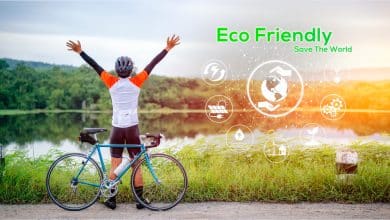
Embracing Eco-Spirituality And Nature Connection: Connecting with Nature for a Sustainable Future

Review: Withings Body+ Smart Wi-Fi Bathroom Scale

Embrace Green Living and Mindfulness: Creating a Sustainable Future
One comment.
- Pingback: Environmental News And Policy: Urgent Action Needed For A Sustainable Future
Leave a Reply Cancel reply
Your email address will not be published. Required fields are marked *
Save my name, email, and website in this browser for the next time I comment.
Get the latest content and program updates from Life Time.
Unsubscribe
The Better Good Life: An Essay on Personal Sustainability

Imagine a cherry tree in full bloom, its roots sunk into rich earth and its branches covered with thousands of blossoms, all emitting a lovely fragrance and containing thousands of seeds capable of producing many more cherry trees. The petals begin to fall, covering the ground in a blanket of white flowers and scattering the seeds everywhere.
Some of the seeds will take root, but the vast majority will simply break down along with the spent petals, becoming part of the soil that nourishes the tree — along with thousands of other plants and animals.
Looking at this scene, do we shake our heads at the senseless waste, mess and inefficiency? Does it look like the tree is working too hard, showing signs of strain or collapse? Of course not. But why not?
Well, for one thing, because the whole process is beautiful, abundant and pleasure producing: We enjoy seeing and smelling the trees in bloom, we’re pleased by the idea of the trees multiplying (and producing delicious cherries ), and everyone for miles around seems to benefit in the process.
The entire lifecycle of the cherry tree is rewarding, and the only “waste” involved is an abundant sort of nutrient cycling that only leads to more good things.
The entire lifecycle of the cherry tree is rewarding, and the only “waste” involved is an abundant sort of nutrient cycling that only leads to more good things. Best of all, this show of productivity and generosity seems to come quite naturally to the tree. It shows no signs of discontent or resentment — in fact, it looks like it could keep this up indefinitely with nothing but good, sustainable outcomes.
The cherry-tree scenario is one model that renowned designer and sustainable-development expert William McDonough uses to illustrate how healthy, sustainable systems are supposed to work. “Every last particle contributes in some way to the health of a thriving ecosystem,” he writes in his essay (coauthored with Michael Braungart), “The Extravagant Gesture: Nature, Design and the Transformation of Human Industry” (available at).
Rampant production in this scenario poses no problem, McDonough explains, because the tree returns all of the resources it extracts (without deterioration or diminution), and it produces no dangerous stockpiles of garbage or residual toxins in the process. In fact, rampant production by the cherry tree only enriches everything around it.
In this system and most systems designed by nature, McDonough notes, “Waste that stays waste does not exist. Instead, waste nourishes; waste equals food.”
If only we humans could be lucky and wise enough to live this way — using our resources and energy to such good effect; making useful, beautiful, extravagant contributions; and producing nothing but nourishing “byproducts” in the process.
If only we humans could be lucky and wise enough to live this way — using our resources and energy to such good effect; making useful, beautiful, extravagant contributions ; and producing nothing but nourishing “byproducts” in the process. If only our version of rampant production and consumption produced so much pleasure and value and so little exhaustion, anxiety, depletion and waste.
Well, perhaps we can learn. More to the point, if we hope to create a decent future for ourselves and succeeding generations, we must. After all, a future produced by trends of the present — in which children are increasingly treated for stress, obesity, high blood pressure and heart disease, and in which our chronic health problems threaten to bankrupt our economy — is not much of a future.
We need to create something better. And for that to happen, we must begin to reconsider which parts of our lives contribute to the cherry tree’s brand of healthy vibrance and abundance, and which don’t.
The happy news is, the search for a more sustainable way of life can go hand in hand with the pursuit of a healthier, more rewarding life. And isn’t that the kind of life most of us are after?
In Search of Sustainability and Satisfaction
McDonough’s cherry-tree model represents several key principles of sustainability — including lifecycle awareness, no-waste nutrient cycling and a commitment to “it’s-all-connected” systems thinking (see “ See the Connection “). And it turns out that many of these principles can be usefully applied not just to natural resources and ecosystems, but to all systems — from frameworks for economic and industrial production to blueprints for individual and collective well-being.
For example, when we look at our lives through the lens of sustainability, we can begin to see how unwise short-term tradeoffs (fast food, skipped workouts, skimpy sleep, strictly-for-the-money jobs) produce waste (squandered energy and vitality, unfulfilled personal potential, excessive material consumption) and toxic byproducts (illness, excess weight , depression, frustration, debt).
We can also see how healthy choices and investments in our personal well-being can produce profoundly positive results that extend to our broader circles of influence and communities at large.
Conversely, we can also see how healthy choices and investments in our personal well-being can produce profoundly positive results that extend to our broader circles of influence and communities at large. When we’re feeling our best and overflowing with energy and optimism, we tend to be of greater service and support to others. We’re clearer of mind, meaning we can identify opportunities to reengineer the things that aren’t working in our lives. We can also more fully appreciate and emphasize the things that are (as opposed to feeling stuck in a rut , down in the dumps, unappreciated or entitled to something we’re not getting).
When you look at it this way, it’s not hard to see why sustainability plays such an important role in creating the conditions of a true “ good life ”: By definition, sustainability principles discourage people from consuming or destroying resources at a greater pace than they can replenish them. They also encourage people to notice when buildups and depletions begin occurring and to correct them as quickly as possible.
As a result, sustainability-oriented approaches tend to produce not just robust, resilient individuals , but resilient and regenerative societies — the kind that manage to produce long-term benefits for a great many without undermining the resources on which those benefits depend. (For a thought-provoking exploration of how and why this has been true historically, read Jared Diamond’s excellent book Collapse: How Societies Choose to Fail or Succeed .)
The Good Life Gone Bad
So, what exactly is a “good life”? Clearly, not everyone shares the same definition, but most of us would prefer a life filled with experiences we find pleasing and worthwhile and that contribute to an overall sense of well-being.
We’d prefer a life that feels good in the moment, but that also lays the ground for a promising future — a life, like the cherry tree’s, that contributes something of value and that benefits and enriches the lives of others, or at least doesn’t cause them anxiety and harm.
Unfortunately, historically, our pursuit of the good life has focused on increasing our material wealth and upgrading our socioeconomic status in the short term (learn more at “ What Is Affluenza? “). And, in the big picture, that approach has not turned out quite the way we might have hoped.
For too many, the current version of “the good life” involves working too-long hours and driving too-long commutes. It has us worrying and running ourselves ragged.
For too many, the current version of “the good life” involves working too-long hours and driving too-long commutes. It has us worrying and running ourselves ragged, overeating to soothe ourselves, watching TV to distract ourselves, binge-shopping to sate our desire for more, and popping prescription pills to keep troubling symptoms at bay. This version of “the good life” has given us only moments a day with the people we love, and virtually no time or inclination to participate as citizens or community members.
It has also given us anxiety attacks; obesity; depression ; traffic jams; urban sprawl; crushing daycare bills; a broken healthcare system; record rates of addiction, divorce and incarceration; an imploding economy; and a planet in peril.
From an economic standpoint, we’re more productive than we’ve ever been. We’ve focused on getting more done in less time. We’ve surrounded ourselves with technologies designed to make our lives easier, more comfortable and more amusing.
Yet, instead of making us happy and healthy, all of this has left a great many of us feeling depleted, lonely, strapped, stressed and resentful. We don’t have enough time for ourselves, our loved ones, our creative aspirations or our communities. And in the wake of the bad-mortgage-meets-Wall-Street-greed crisis, much of the so-called value we’ve been busy creating has seemingly vanished before our eyes, leaving future generations of citizens to pay almost inconceivably huge bills.
The conveniences we’ve embraced to save ourselves time have reduced us to an unimaginative, sedentary existence that undermines our physical fitness and mental health and reduces our ability to give our best gifts.
Meanwhile, the quick-energy fuels we use to keep ourselves going ultimately leave us feeling sluggish, inflamed and fatigued. The conveniences we’ve embraced to save ourselves time have reduced us to an unimaginative, sedentary existence that undermines our physical fitness and mental health and reduces our ability to give our best gifts. (Not sure what your best gift is? See “ Play to Your Strengths ” for more.)
Our bodies and minds are showing the telltale symptoms of unsustainable systems at work — systems that put short-term rewards ahead of long-term value. We’re beginning to suspect that the costs we’re incurring could turn out to be unacceptably high if we ever stop to properly account for them, which some of us are beginning to do.
Accounting for What Matters
Defining the good life in terms of productivity, material rewards and personal accomplishment is a little like viewing the gross domestic product (GDP) as an accurate measurement of social and economic progress.
In fact, the GDP is nothing more than a gross tally of products and services bought and sold, with no distinctions between transactions that enhance well-being and transactions that diminish it, and no accounting for most of the “externalities” (like losses in vitality, beauty and satisfaction) that actually have the greatest impact on our personal health and welfare.
We’d balk if any business attempted to present a picture of financial health by simply tallying up all of its business activity — lumping income and expense, assets and liabilities, and debits and credits together in one impressive, apparently positive bottom-line number (which is, incidentally, much the way our GDP is calculated).
Yet, in many ways, we do the same kind of flawed calculus in our own lives — regarding as measures of success the gross sum of the to-dos we check off, the salaries we earn, the admiration we attract and the rungs we climb on the corporate ladder.
But not all of these activities actually net us the happiness and satisfaction we seek, and in the process of pursuing them, we can incur appalling costs to our health and happiness. We also make vast sacrifices in terms of our personal relationships and our contributions to the communities, societies and environments on which we depend.
This is the essence of unsustainability , the equivalent of a cherry tree sucking up nutrients and resources and growing nothing but bare branches, or worse — ugly, toxic, foul-smelling blooms. So what are our options?
Asking the Right Questions
In the past several years, many alternative, GDP-like indexes have emerged and attempted to more accurately account for how well (or, more often, how poorly) our economic growth is translating to quality-of-life improvements.
Measurement tools like the Genuine Progress Indicator (GPI), developed by Redefining Progress, a nonpartisan public-policy and economic think tank, factor in well-being and quality-of-life concerns by considering both positive and negative impacts of various products and services. They also measure more impacts overall (including impacts on elements of “being” and “doing” vs. just “having”). And they evaluate whether various financial expenditures represent a net gain or net loss — not just in economic terms, but also in human, social and ecological ones (see “Sustainable Happiness,” below).
Perhaps it’s time to consider our personal health and well-being in the same sort of broader context — distinguishing productive activities from destructive ones, and figuring the true costs and unintended consequences of our choices into the assessment of how well our lives are working.
To that end, we might begin asking questions like these:
- Where, in our rush to accomplish or enjoy “more” in the short run, are we inadvertently creating the equivalent of garbage dumps and toxic spills (stress overloads, health crises, battered relationships, debt) that will need to be cleaned up later at great (think Superfund) effort and expense?
- Where, in our impatience to garner maximum gains in personal productivity, wealth or achievement in minimum time, are we setting the stage for bailout scenarios down the road? (Consider the sacrifices endured by our families, friends and colleagues when we fall victim to a bad mood, much less a serious illness or disabling health condition.)
- Where, in an attempt to avoid uncertainty, experimentation or change , are we burning through our limited and unrenewable resource of time (staying at jobs that leave us depleted, for example), rather than striving to harness our bottomless stores of purpose-driven enthusiasm (by, say, pursuing careers or civic duties of real meaning)?
- Where are we making short-sighted choices or non-choices (about our health, for example) that sacrifice the resources we need (energy, vitality, clear focus) to make progress and contributions in other areas of our lives?
In addition to these assessments, we can also begin imagining what a better alternative would look like:
- What might be possible if we embraced a different version of the good life — the kind of good life in which the vast majority of our choices both feel good and do good?
- What if we took a systems view of our life , acknowledging how various inputs and outputs play out (for better or worse) over time? What if we fully considered how those around us are affected by our choices now and in the long term?
- What if we embraced more choices that honor our true nature, that gave us more opportunities to use our talents and enthusiasms in the service of a higher purpose?
One has to wonder how many of our health and fitness challenges would evaporate under such conditions — how many compensatory behaviors (overeating, hiding out, numbing out) would simply no longer have a draw.
How many health-sustaining behaviors would become easy and natural choices if each of us were driven by a strong and joyful purpose , and were no longer saddled with the stress and dissatisfaction inherent in the lives we live now?
Think about the cherry-tree effect implicit in such a scenario: each of us getting our needs met, fulfilling our best potential, living at full vitality, and contributing to healthy, vital, sustainable communities in the process.
If it sounds a bit idealistic, that’s probably because it describes an ideal distant enough from our current reality to provoke a certain amount of hopelessness. But that doesn’t mean it’s entirely unrealistic. In fact, it’s a vision that many people are increasingly convinced is the only kind worth pursuing.
Turning the Corner
Maybe it has something to do with how many of our social, economic and ecological systems are showing signs of extreme strain. Maybe it’s how many of us are sick and tired of being sick and tired — or of living in a culture where everyone else seems sick and tired. Maybe it’s the growing realization that no matter how busy and efficient we are, if our efforts don’t feed us in a deep way, then all that output may be more than a little misguided. Whatever the reason, a lot of us are asking: If our rampant productivity doesn’t make us happy, doesn’t allow for calm and creativity, doesn’t give us an opportunity to participate in a meaningful way — then, really, what’s the point?
These days, it seems that more of us are taking a keen interest in seeking out better ways, and seeing the value of extending the lessons of sustainability beyond the natural world and into our own perspectives on what the good life is all about.
In her book MegaTrends 2010: The Rise of Conscious Capitalism , futurist Patricia Aburdene describes a hopeful collection of social and economic trends shaped by a large and influential subset of the American consuming public. What these 70 million individuals have in common, she explains, are some very specific values-driven behaviors — most of which revolve around seeking a better, deeper, more meaningful and sustainable quality of life (discover the four pillars or meaning at “ How to Build a Meaningful Life “).
[“Conscious Consumers” balance] short-term desires and conveniences with long-term well-being — not just their own, but that of their local and larger communities, and of the planet as a whole.
These “Conscious Consumers,” as Aburdene characterizes them, are more carefully weighing material and economic payoffs against moral and spiritual ones. They are balancing short-term desires and conveniences with long-term well-being — not just their own, but that of their local and larger communities, and of the planet as a whole. They are acting, says Aburdene, out of a sort of “enlightened self-interest,” one that is deeply rooted in concerns about sustainability in all its forms.
“Enlightened self-interest is not altruism,” she explains. “It’s self-interest with a wider view. It asks: If I act in my own self-interest and keep doing so, what are the ramifications of my choices? Which acts — that may look fine right now — will come around and bite me and others one year from now? Ten years? Twenty-five years?”
In other words, Conscious Consumers are not merely consumers, but engaged and concerned individuals who think in terms of lifecycles, who perceive the subtleties and complexities of interconnected systems .
As John Muir famously said: “When one tugs at a single thing in nature, he finds it attached to the rest of the world.” Just as the cherry tree is tethered in a complex ecosystem of relationships, so are we.
Facing Reality
When we live in a way that diminishes us or weighs us down — whether as the result of poor physical health and fitness, excess stress and anxiety, or any compromise of our best potential — we inevitably affect countless other people and systems whose well-being relies on our own.
For example, if we don’t have the time and energy to make food for ourselves and our families, we end up eating poorly, which further diminishes our energy, and may also result in our kids having behavior or attention problems at school, undermining the quality of their experience there, and potentially creating problems for others.
As satisfaction and well-being go down, need and consumption go up.
If we skimp on sleep and relaxation in order to “get more done,” we court illness and depression, risking both our own and others’ productivity and happiness in the process and diminishing the creativity with which we approach challenges.
At the individual level, unsustainable choices create strain and misery. At the collective level, they do the same thing, with exponential effect. Because, when not enough of us are living like thriving cherry trees, cycles of scarcity (rather than abundance) ensue. Life gets harder for everyone. As satisfaction and well-being go down, need and consumption go up. Our sense of “enough” becomes distorted.
Taking Full Account
The basic question of sustainability is this: Can you keep doing what you’re doing indefinitely and without ill effect to yourself and the systems on which you depend — or are you (despite short-term rewards you may be enjoying now, or the “someday” relief you’re hoping for) on a likely trajectory to eventual suffering and destruction?
When it comes to the ecology of the planet, this question has become very pointed in recent years. But posed in the context of our personal lives, the question is equally instructive: Are we living like the cherry tree — part of a sustainable and regenerative cycle — or are we sucking up resources, yet still obsessed with what we don’t have? Are we continually generating new energy, vitality, generosity and personal potential , or wasting it?
We can work just so hard and consume just so much before we begin to experience both diminishing personal returns and increasing degenerative costs.
The human reality, in most cases, isn’t quite as pretty as the cherry tree in full bloom. We can work just so hard and consume just so much before we begin to experience both diminishing personal returns and increasing degenerative costs. And when enough of us are in a chronically diminished state of well-being, the effect is a sort of social and moral pollution — the human equivalent of the greenhouse gasses that threaten our entire ecosystem.
Accounting for these soft costs, or even recognizing them as relevant externalities, is not something we’ve been trained to do well. But all that is changing — in part, because many of us are beginning to realize that much of what we’ve been sold in the name of “progress” is now looking like anything but. And, in part, because we’re starting to believe that not only might there be a better way, but that the principles for creating it are staring us right in the face.
By making personal choices that respect the principles of sustainability, we can interrupt the toxic cycles of overconsumption and overexertion. Ultimately, when confronted with the possibility of a better quality of life and more satisfying expression of our potential, the primary question becomes not just can we continue living the way we have been, but perhaps just as important, why would we even want to ?
If the approach we’ve been taking appears likely to make us miserable (and perhaps extinct), then it makes sense to consider our options. How do we want to live for the foreseeable and sustainable future, and what are the building blocks for that future? What would it be like to live in a community where most people were overflowing with vitality and looking for ways to be of service to others?
While no one expert or index or council claims to have all the answers to that question, when it comes to discerning the fundamentals of the good life, nature conveniently provides most of the models we need. It suggests a framework by which we can better understand and apply the principles of sustainability to our own lives. Now it’s up to us to apply them.
Make It Sustainable
Here are some right-now changes you can make to enhance and sustain your personal well-being:
1. Rethink Your Eating.
Look beyond meal-to-meal concerns with weight. Aim to eat consciously and selectively in keeping with the nourishment you want to take in, the energy and personal gifts you want to contribute, and the influence you want to have on the world around you.
To that end, you might start eating less meat, or fewer packaged foods, or you might start eating regularly so that you have enough energy to exercise (and so that your low blood sugar doesn’t negatively affect your mood and everyone around you).
You also might start packing your lunch, suggests money expert Vicki Robin: Not only will you have more control over what and how you eat, but the money you’ll save over the course of a career can amount to a year’s worth of work. “Bringing your lunch saves you a year of your life,” she says.
2. Set a Regular Bedtime
Having a target bedtime can help you get the sleep you need to be positive and productive, and to avoid becoming depleted and depressed. Research confirms that adequate sleep is essential to clear thinking, balanced mood, healthy metabolism, strong immunity, optimal vitality and strong professional performance.
Research also shows that going to bed earlier provides a higher quality of rest than sleeping in, so get your hours at the start of the night. By taking care of yourself in this simple way, you lay the groundwork for all kinds of regenerative (vs. depleting) cycles.
3. Own Your Outcomes
If there are parts of your life you don’t like — parts that feel toxic, frustrating or wasteful to you — be willing to trace the outcomes back to their origins, including your choices around self-care , seeking help, balancing priorities and sticking to your core values.
Also examine the full range of outputs and impacts: What waste or damage is occurring as a result of this area of unresolved challenge? Who else and what else in your life might be paying too-high a price for the scenario in question? If you’re unsure about whether or not a choice or an activity you’re involved in is sustainable, ask yourself the following questions:
- Given the option, would I do or choose this again? Would I do it indefinitely?
- How long can I keep this up, and at what cost — not just to me, but to the other people and systems I care about?
- What have I sacrificed to get here; what will it take for me to continue? Are the rewards worth it, even if the other areas of my life suffer?
Sustainable Happiness
Not all growth and productivity represent progress, particularly if you consider happiness and well-being as part of the equation. The growing gap between our gross domestic product and Genuine Progress Indicator (as represented below) suggests we could be investing our resources with far happier results.

Data source: Redefining Progress, rprogress.org . Chart graphic courtesy of Yes! magazine.
Learn more about the most reliable, sustainable sources of happiness and well-being in the Winter 2009 issue of Yes! magazine, available at www.yesmagazine.org .
Learning From Nature
What can we learn from ecological sustainability about the best ways to balance and sustain our own lives? Here are a few key lessons:
- Everything is in relationship with everything else. So overdrawing or overproducing in one area tends to negatively affect other areas. An excessive focus on work can undermine your relationship with your partner or kids. Diminished physical vitality or low mood can affect the quality of your work and service to others.
- What comes around goes around. Trying to “cheat” or “skimp” or “get away with something” in the short term generally doesn’t work because the true costs of cheating eventually become painfully obvious. And very often the “cleanup” costs more and takes longer than it would have to simply do the right thing in the first place.
- Waste not, want not. Unpleasant accumulations or unsustainable drains represent opportunities for improvement and reinvention. Nature’s models of nutrient cycling show us that what looks like waste can become food for a process we simply haven’t engaged yet: Anxiety may be nervous energy that needs to be burned off, or a nudge to do relaxation and self-inquiry exercises that will churn up new insights and ideas. Excess fat may be fuel for enjoyable activities we’ve resisted doing or haven’t yet discovered — or a clue that we’re hungry for something other than food. The clutter in our homes may represent resources that we haven’t gotten around to sharing. Look for ways to put waste and excess to work, and you may discover all kinds of “nutrients” just looking for attention. (See “ The Emotional Toll of Clutter “.)
The Sustainable Self
Connie Grauds, RPh, is a pharmacist who combines her Western medical training with shamanic teachings, and in her view, we get caught in wearying patterns primarily because of fear . “Energy-depleting thoughts and feelings underlie energy-depleting habits,” Grauds writes in her book The Energy Prescription , cowritten with Doug Childers. She says that we often burn ourselves out because we’re unconsciously afraid of what will happen if we don’t.
Grauds uses the shamanic term “susto” to describe our anxious response to external situations we can’t control — the traffic jam, the work deadline, the pressure to buy stuff we don’t really need. “Susto” triggers the body’s fight-or-flight response, which encourages short-term, unconscious reactions to stress. When we shift to a more internal focus, tuning in to our body’s physical and emotional signals more reflectively, we act from what Grauds calls our “sustainable self.” She says the sustainable self can be accessed anytime with a simple four-step process:
- Take a deep breath ;
- Feel your body;
- Notice your thoughts, and then;
- Recognize that you are connected to a larger network of energy .
“A sustainable self recognizes and embraces its interdependent relationship to life,” she says, explaining that when we get our energy from controlling external circumstances we’re bound to collapse eventually, but when we’re connected to our internal reserves, we can be much more effective. “By consistently doing things that replenish us and not doing things that needlessly deplete us,” Grauds writes, “we access and conduct the energy we need to make and sustain positive changes and function at peak levels.”
Thoughts to share?
This Post Has 0 Comments
Leave a reply cancel reply.
Your email address will not be published. Required fields are marked *
ADVERTISEMENT
More Like This

How to Develop a ‘Stretch’ Mindset
Working with what you have can be the key to more sustainable success. Adopting a “stretch” mindset can help.

The Power of Intention: Learning to Co-Create Your World Your Way
Thought-provoking takeaways from Wayne Dyer’s classic guide to conscious living.

6 Keys to a Happy and Healthy Life
A functional-medicine pioneer explains how to make small choices that build lasting well-being.
- News, Stories & Speeches
- Get Involved
- Structure and leadership
- Committee of Permanent Representatives
- UN Environment Assembly
- Funding and partnerships
- Policies and strategies
- Evaluation Office
- Secretariats and Conventions

- Asia and the Pacific
- Latin America and the Caribbean
- New York Office
- North America
- Climate action
- Nature action
- Chemicals and pollution action
- Digital Transformations
- Disasters and conflicts
- Environment under review
- Environmental rights and governance
- Extractives
- Fresh Water
- Green economy
- Ocean, seas and coasts
- Resource efficiency
- Sustainable Development Goals
- Youth, education and environment
- Publications & data

Why Sustainable lifestyles matter
Sustainable living means understanding how our lifestyle choices impact the world around us and finding ways for everyone to live better and lighter. Applying a ‘people lens’ to sustainability is new, timely and opportunities are great. Sustainable living and lifestyles for the first time appear in the Sustainable Development Goals (4 Education and 12.8 Responsible Consumption). UN Environment Programme is at the forefront of looking into what sustainable lifestyles are and how decision-making can be better harnessed for sustainability. How can governments and business better support and measure change?
Most people do not wake up with the intention to harm the environment - nor to help it . People get up and live their lives and strive for aspirations. The amount of stuff people have in many parts of the world has shot up, while in other areas, many struggle to meet basic needs. Our future now depends on our behavior and how we choose to live, work and play as global consumers – how we run our homes, what food we eat, how we get around, how we relax, what we buy and how we care for our planet.
People do not change behavior based on what they should do . They do not respond to data and statistics, nor to negative future scenarios . People act to fulfill their needs and aspirations. They make decisions based on price, accessibility, effectiveness and additional criteria like well-being or trends. Sustainability is not the defining criteria. Even the people who want to live more sustainably often lack information and access to affordable and desirable products and services. This underscores that beyond people, it is up to governments and business (who are also consumers!) to provide more information and support positive behavior change, and to support and develop new business models to make sustainable living a default option.
UNEP, a long-time proponent of sustainable living and lifestyles, now contributes to the One Planet Network Programme of Sustainable Lifestyles and Education co-led by Sweden and Japan.
Our Vision: To harness individual decision-making for sustainability and integrate sustainable lifestyle principles across society, so that sustainable living, in line with the Sustainable Development Goals, becomes the norm (the New Normal) for people everywhere.
Who do we work with?
Lifestyles cut cross many sectors such as mobility, food, buildings and construction, consumer information, textiles, tourism; they link to efforts such as the One Planet Network and take into account regional and urban differences.
Individuals – to enable and motivate them and the organizations that work with people, to make more sustainable lifestyle choices. It’s also about governments and the private sector providing (default) options and systems to meet needs more sustainability.
Research institutions and non-governmental organizations – to develop sustainable lifestyle frameworks and future forecasting. By bringing experts together to gather and synthesize data, we support an evidence-base that feeds into education, policy and practice.
Educational institutions – to raise awareness and critical thinking to connect how daily living decisions affect the world and people around us. This includes formal and informal education as well as developing evidence-based, climate impactful messages and nature-based solutions and rolling them out through urban initiatives, campaigns and pilot curricula.
Governments – to provide guidelines, frameworks and future forecasts, to support the adoption of sustainable policies and improve infrastructure. This advances incentives and options for people to make sustainable lifestyle choices.
Cultural influencers, communication and media organizations – to frame messaging in a creative and inspiring way, through new platforms. Media organizations, for instance, can design messaging and advertise them through influencers or documentaries to increase public awareness. Climate activists and cultural influencers are the new ‘policy wild cards’ to embrace.
Related Sustainable Development Goals

© 2024 UNEP Terms of Use Privacy Report Project Concern Report Scam Contact Us

Is It Easy To Live A More Eco-Friendly Lifestyle? Our Guide
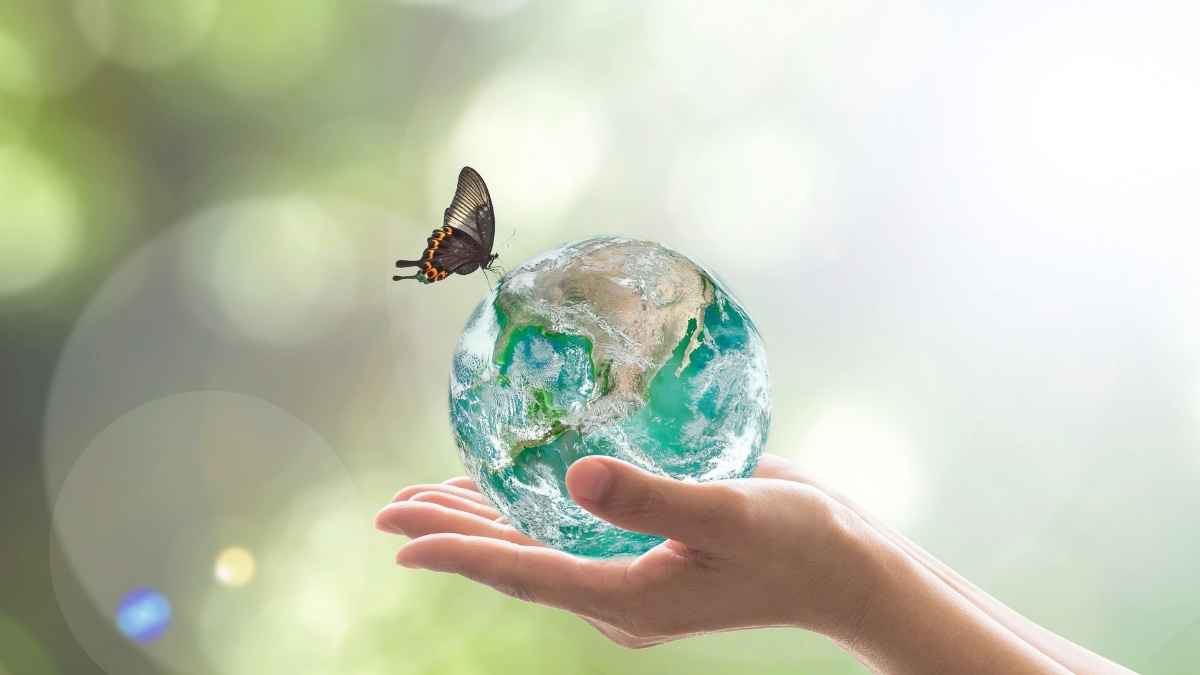
The need to live an eco-friendlier lifestyle has been on the rise recently. Statistics have shown that only 11% of the waste produced annually is being returned for recycling.
Individuals, businesses , and organizations now have a need, more than ever, to be aware of their influence in sustaining a healthy environment and make conscious decisions in reducing their carbon footprint.
Now, living this eco-friendly life may seem very difficult to achieve, and here’s why we have decided to pen down tips for you to help the environment select a sustainable option, be more energy-efficient, and reduce carbon emission rates.
Most of them have to begin with you, including your families.
Is it easy to live a more eco-friendly lifestyle? Let’s take a look.
5 Easy things you can do to live an eco-friendly lifestyle
Let’s begin with the easy changes you can make. Here are 5 of them.
1. Switch off light bulbs when you leave a room.

Switching off the light bulbs when leaving a room is essential to living an eco-friendly and sustainable lifestyle. One of these reasons is because it helps to save energy and money.
Depending on the type of light bulbs you use, you can save money on them by switching these light bulbs off when they are not going to be in use for a long time, for instance, during the daytime or when the bulbs are in a less-frequently accessed area, like the basement, store, or wine cellar.

Fashionably Green and On-The-Go
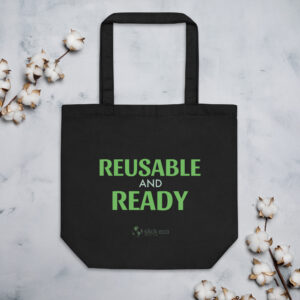
Reusable and Ready Eco-Friendly Tote Bag
2. use eco-cleaning products to clean the house..

Cleaning products nowadays contain harmful chemicals which are hazardous to the environment. Examples are the foaming agents we use, detergents, and preservatives.
One of the easy ways to live an eco-friendlier lifestyle is to opt-in for green cleaning products that do not cause damage to the environment.
Products that are naturally derived and free of synthetic ingredients are suitable for living an eco-friendly lifestyle and also come with a host of benefits .

3. Buy less paper and recycle more
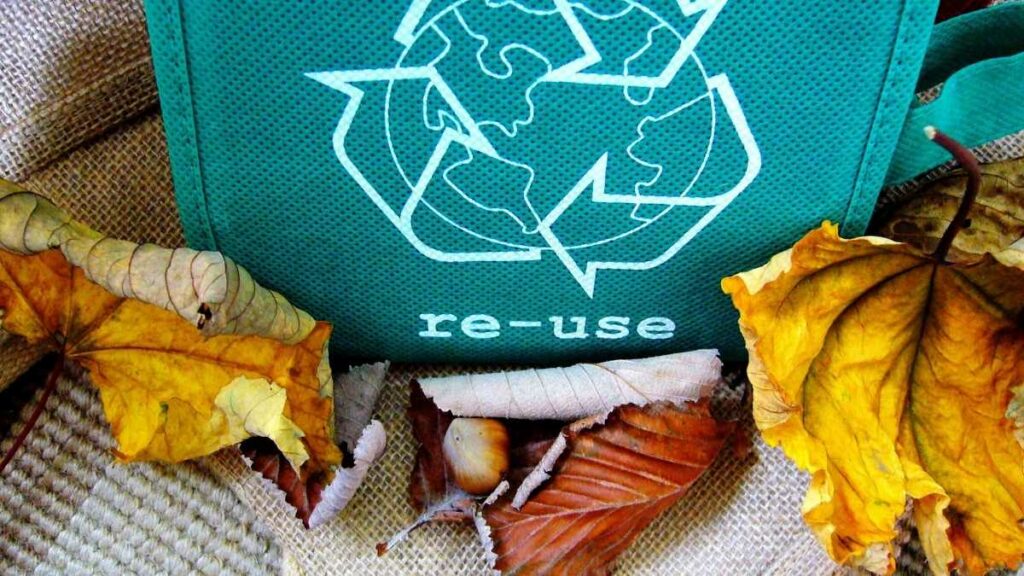
As the planet dives deep into being digital, it is becoming harder to live a day without the use of paper.
Paper is mainly used everywhere we can; homes, offices, organizations, schools, restaurants, even use paper bags and paper towels.
While we make a reasonable effort to reduce the amount of paper we use, for example, by taking digital notes, recycling as much paper as possible is even an eco-friendlier tip.
According to the EPA , recycling about a ton of paper can help save more than 15 mature trees.
By taking this conscious effort, we are already beginning to live an eco-friendly lifestyle, and we are ultimately reducing our carbon footprint even through paper usage.
4. Use Canvas bags instead of plastic bags

Restaurants , stores, and cafes need to opt-in to use canvas bags for their customers who shop instead of conventional paper and plastic bags.
Although the canvas bags might be a little higher in price than paper and plastic bags, they are used significantly more than the plastic and paper bags as you can use them to repack items later, are light, and are considerably more robust.
They are also fit for recycling purposes.
5. Use a recyclable, eco-friendly bottled water

The effect of plastic waste cannot be overemphasized, and one of the great contributors to this waste is the plastic bottles we use, and in this case, water bottles.
While it is a challenge to live without plastic bottles, it is good to make sure they aren’t adding to the environment’s waste.
An excellent way to do this is to buy bottled water that isn’t for single use; reusable and recyclable.
Re-usable helps us save money on bottled water as we’ll only need to purchase fewer bottles, and being recyclable helps contribute significantly to sustainable living and producing zero waste.
5 things you can do that require a bit more time/thought/planning
Now we move on to some of the more challenging changes you can make. Some require planning and additional thought.
1. Change your family habits
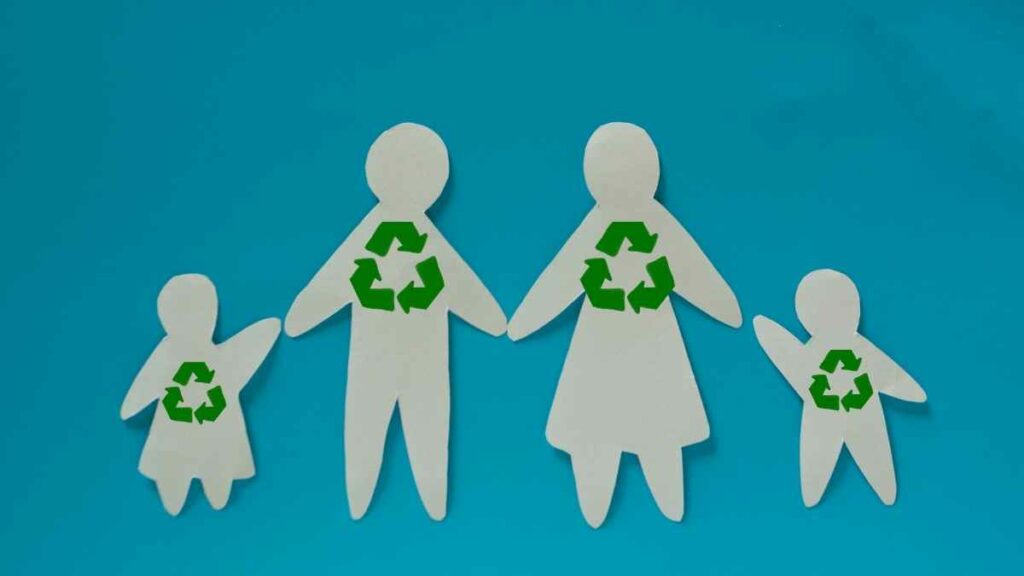
If not correctly checked, family habits can become bad and can negatively contribute to our environment.
The importance of good habits like using environmentally friendly or plant-based hair and skin products, handling waste with care, choosing food and products carefully, building proper gardens, etc., should be taught appropriately to families.
This helps the planet to become safer and greener.
2. Think about the best way to travel
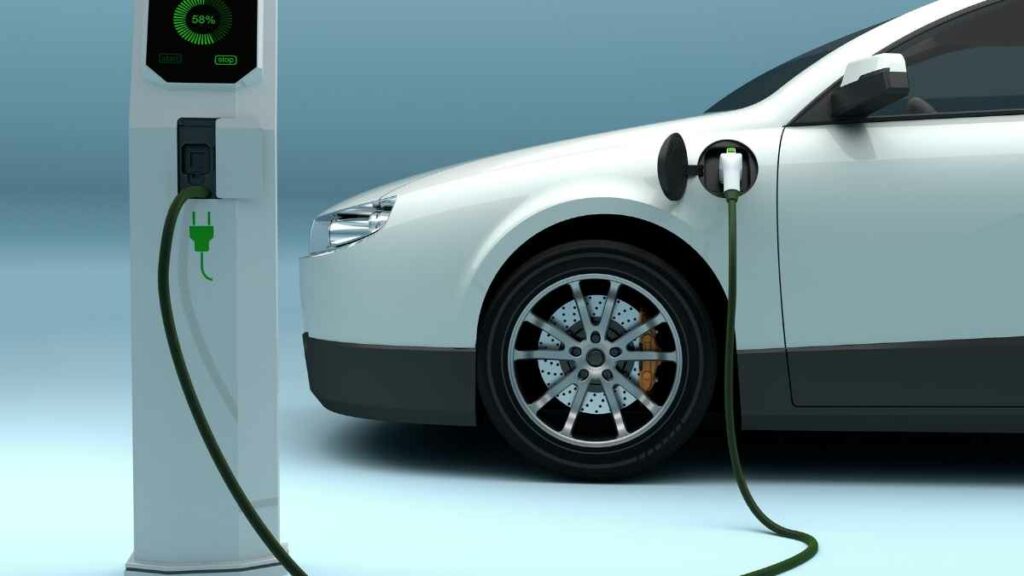
While we’d love to invest in quality time, spend picnics and holidays with members of our family and loved ones, we should also consider doing it in an eco-friendly.
This begins with setting up the proper mode of transportation for our travels and picnics.
Depending on the destination of our travels, we can select a transportation mode that won’t negatively agitate the environment, for instance, biking instead of driving, driving instead of taking airplanes, taking electric trains instead of driving or talking airplanes, and so on.
These practices are simple ways to sustain environmental needs.
3. Cut down on energy in your home

There are several ways to live a sustainable lifestyle, reduce energy consumption and live an eco-friendly in your home.
For instance, you can unplug appliances that aren’t in current use as they consume energy in a low state, raise your thermostat in the summer and lower it in the winter, turn off heaters when not in use, dry clothes by spreading them on a clothesline, and so on.
Practices like these not only help you cut down on energy bills you incur per month; they also help to reduce the amount of waste contributed to the environment.
4. Eat less meat

Cutting down on the consumption of meat help to reduce the number of greenhouse gases produced in the rearing, slaughtering, and processing of livestock.
One of the fun tips to eat less meat is to specifically choose a day, or probably, days of the week where you imbibe a no-meat policy.
For instance, Meatless Mondays signify that you do not eat meat on Mondays; instead, you can extend the number of days you eat less meat.
This practice reduces the energy spent on livestock rearing and gives us more room for environmentally greener activities.
5. Reduce water waste

Living an eco-friendlier lifestyle also involves a reduction in water usage. For example, you can invest in a low-flow showerhead to reduce water usage during your baths.
Other practices to optimize water usage includes; timing your baths, turning off the water while brushing your teeth, covering your pool when not in use, and so on.
5 Challenging things that will take time to implement
Lastly, here are 5 of the most challenging things you can do to live a more eco-friendly life. These require dedication and some investment too! It is worth it in the long run, both for you and our planet.
1. Use renewable energy
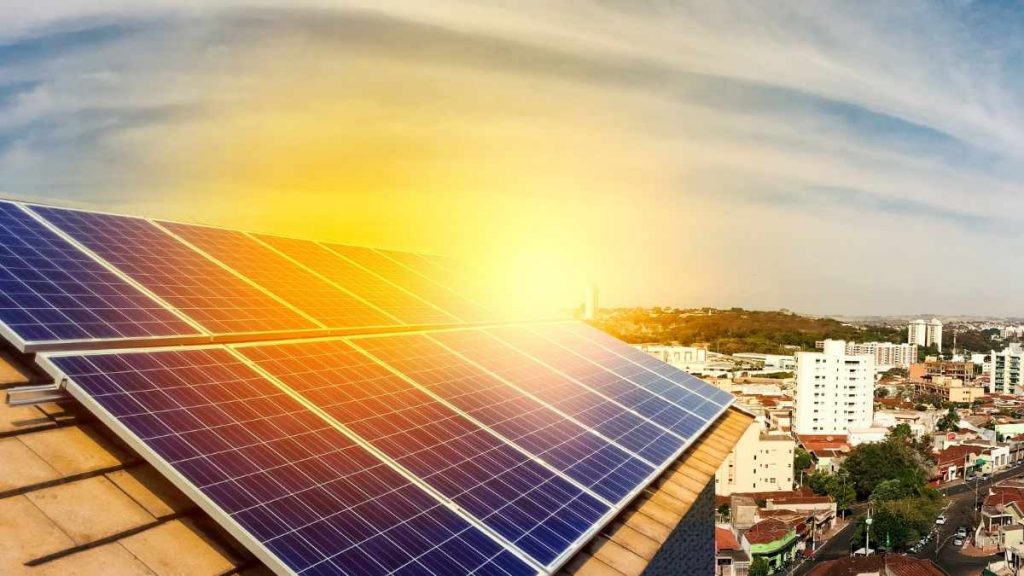
One of the good tips for living an eco-friendlier lifestyle is to invest in renewable energies. Households and organizations largely depend on non-sustainable sources of energy such as oil and gas.
An excellent eco-friendly method to implement is considering the use of solar panels. This is a renewable source of energy that is environmentally cleaner and free of waste.
2. Switch heating source

Homes on several occasions need to be heated, and this has to be done correctly.
In contrast to chimneys, homes can switch to using an eco-friendlier and more sustainable source such as heat pumps, boilers, and solar thermals.
These methods are eco-friendly, energy-efficient, and help save money, mainly depending on renewable energy sources.
3. Recycling your vehicle

One of the eco-friendly tips is to recycle your car. You can recycle your car or auction them off second-hand to a new buyer.
You can also donate your car for philanthropic causes and even receive some tax reductions.
4. Insulate your house

While it might not be enough to seek renewable energy sources alone, you can also insulate your home if you want to go greener. A properly-insulated home helps to create a steady temperature. This environmentally eco-friendly life behavior enables you to maintain internal temperature and save money on energy bills.
5. Create your compost
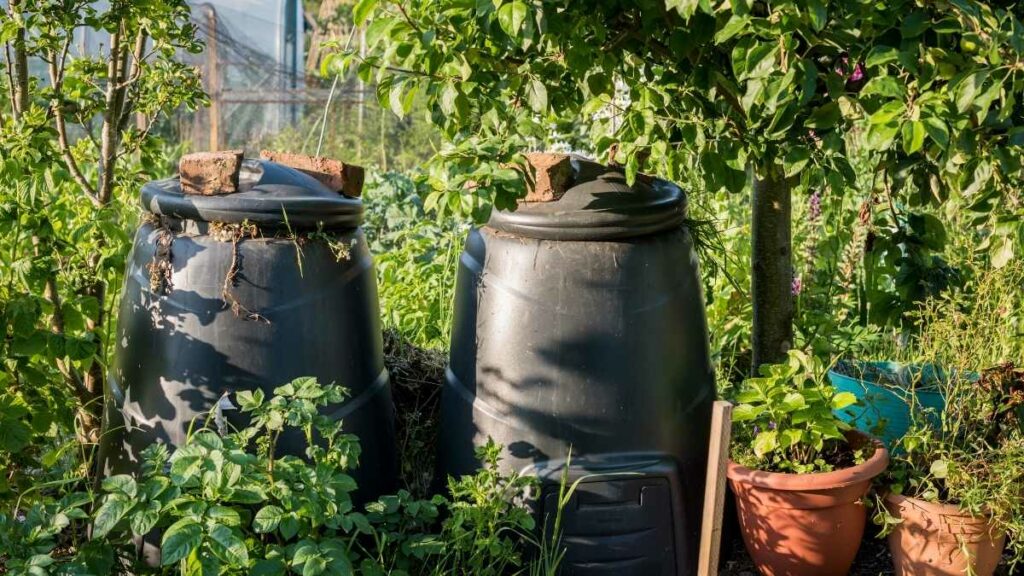
Apart from the good eco-friendly habit of plating gardens, you can switch to creating your compost, particularly from leftover food waste. This practice reduces the need for chemical fertilizers, helps the production of beneficial microorganisms in the soil, reduces carbon emissions, helps retain water moisture.
Although challenging, often time-consuming, all these practices are great ways to live a sustainable, eco-friendly lifestyle.
You can make some changes quickly and without additional cost. Some changes will require an investment to get them off the ground. For instance, implementing renewable energy (like solar) will have an initial outlay, but if you stay in your house long enough, you will save money in the long run.
We must do what we can to help the environment, and that starts now, with you.
How To Conserve Electrical Energy And Help The Environment
7 Must-Have Zero-Waste Products
Live and eco-friendly lifestyle
Do you have some excellent, planet-saving tips you want to pass our way? Feel free to let us know!
Company Information
Pearce Buy LTD is a registered UK company Registered Office Address: Kemp House, 152 - 160 City Road London EC1V 2NX Registered Company Number: 09452636
© 2024 SlickEco.com

The Fight for Sustainability: 7 Ways to Live Eco-Friendly

There has never been a greater pressing need for sustainable living in a world facing environmental difficulties. Adopting an eco-friendly lifestyle is a social duty to protect our world, not simply a personal decision. This article examines seven significant ways that people may make deliberate decisions that lessen their environmental effects to support the struggle for sustainability.
Mindful Consumption
Making educated decisions about the items we purchase is known as mindful consumption, and it’s one of the best ways to lead an eco-friendly lifestyle. People have a significant influence on lessening their environmental footprint when they prioritize products created from sustainable resources and choose things with little packaging. By encouraging consumer-driven efforts, this technique not only reduces waste but also helps environmentally conscious businesses and promotes a more sustainable economy.
Energy Conservation
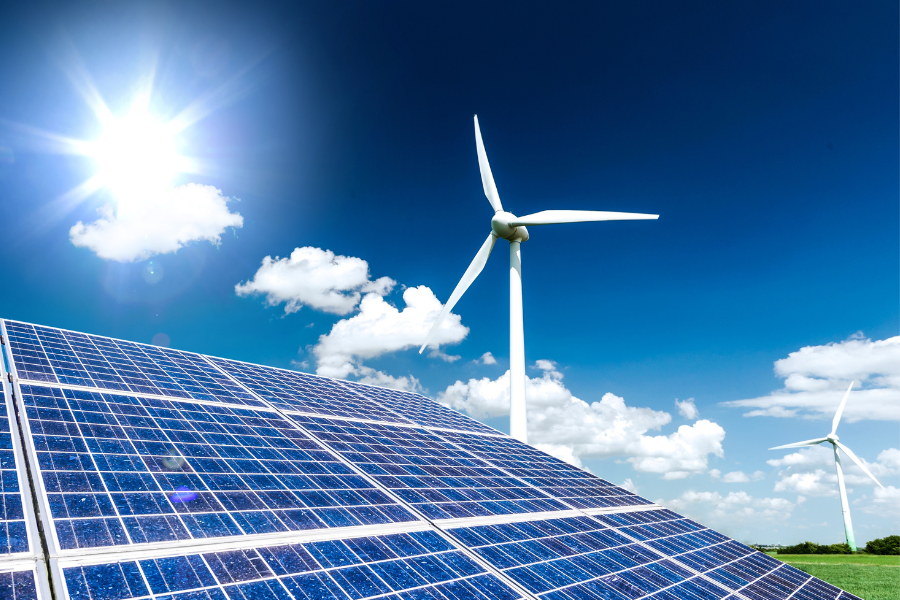
Reducing energy use becomes a vital strategy in the ongoing fight against climate change; by adopting simple habits like turning off lights when not in use, using energy-efficient equipment, and adjusting thermostats to save energy, people may make a significant difference. Adopting these practices helps create a more sustainable future by lowering carbon footprints on an individual and societal level. A significant step in creating a more sustainable and ecologically friendly lifestyle is making a move to renewable energy sources, such as solar or wind power, which address the root causes of environmental degradation. This change establishes the groundwork for a cleaner, greener world for future generations, in addition to addressing the urgent need for energy conservation.
Waste Reduction and Recycling
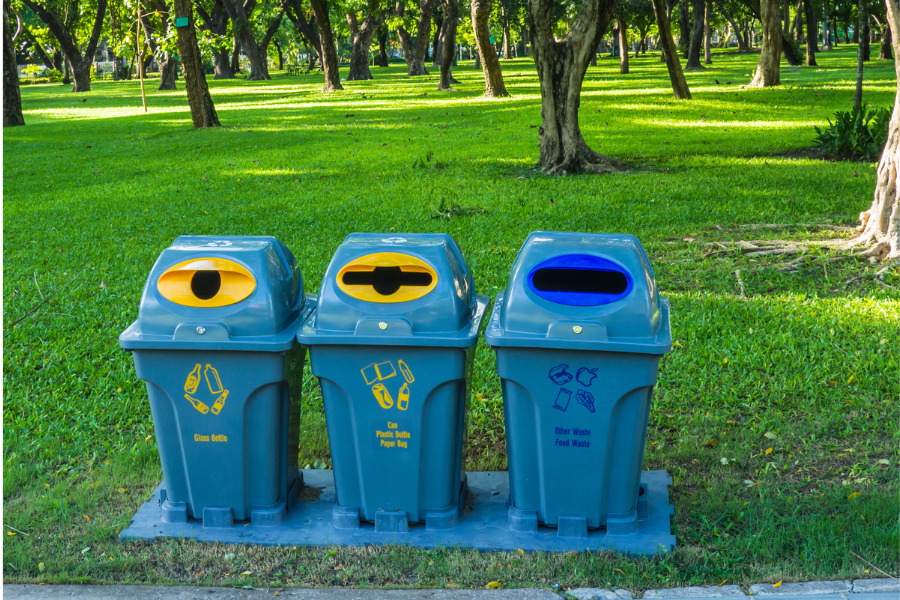
Taking care of the garbage problem is essential to developing an eco-friendly lifestyle. By adhering to the reduce, reuse, and recycle principles, people may lessen their influence on the environment. A circular and sustainable strategy for resource usage includes selecting items with little packaging, using recyclable bags and containers, and actively taking part in recycling initiatives for materials like glass, paper, glassware, and plastics, and even embracing eco-friendly alternatives such as compostable ziplock bags . Closing the circle on organic material and fostering environmental sustainability are two further ways that composting kitchen garbage supports these initiatives.
Sustainable Transportation

Since the transportation industry contributes significantly to carbon emissions, adopting environmentally beneficial decisions in this domain is essential. Instead of depending exclusively on their automobiles, people have the option to use public transit, carpool, bike, or walk. Another greener option is to use an electric or hybrid vehicle, which lowers reliance on fossil fuels and drastically reduces the carbon impact of regular transportation. Sustainable transportation options help to create a better environment and cleaner air.
Water Conservation
Since water is a limited resource, responsible water conservation is necessary for an environmentally friendly future. Reducing needless water waste is made easier by implementing water-efficient habits, including leak repair, low-flow appliance use, and rainwater collection. By reducing the environmental effect of wastewater treatment and delivery systems, thoughtful water use not only preserves this valuable resource but also promotes the general sustainability of communities and ecosystems.
Sustainable Diet
The food industry’s effects on the environment are largely due to transportation, food waste, and farming methods. Choosing organic, seasonal, and locally sourced foods is a key component of adopting a sustainable diet. People may help create a more environmentally friendly food system by eating less meat, especially meats like beef that need a lot of resources, and by switching to plant-based substitutes. This transition lessens the carbon footprint connected to the production and delivery of food while promoting sustainable farming practices.
Advocacy and Education
Key elements of the battle for eco-friendly living include educating people and supporting sustainable activities. People may actively participate in social media knowledge sharing, volunteer in their neighborhood, and donate to environmental groups that promote sustainable solutions. People who become change agents by spreading the word about the value of sustainability encourage others to live more sustainably and harmoniously, thus making the world a more peaceful and sustainable place.
Being environmentally conscious requires a community of people to make a variety of individual decisions rather than a one-size-fits-all strategy. People can make a big difference in the battle for sustainability by embracing sustainable mobility, adopting conscious consumerism, lowering waste, saving energy and water, and pushing for change. When taken as a whole, these activities generate a worldwide movement that promotes a future that is more sustainable and friendlier to the environment.
Written by: Stephanie Snyder
About the Author: Stephanie Caroline Snyder graduated from The University of Florida in 2018 where she majored in Communications with a minor in Mass Media. Currently, she is an author, freelance writer, and blogger. She was born and raised in Panama City, Florida where her family still lives. The oldest of four children, Stephanie moved out to Utah to pursue her professional interests in early 2019 and has worked in content creation, blogging, and internet articles ever since.
Discover More…
- Unlock the secret to a happier, healthier lifestyle by delving into additional captivating articles on our website at: Smart Strategies for Successful Living.
- Enjoy our uplifting and inspiring videos on our YouTube channel at: CLICK HERE.
- For more resources on Tech Help: CLICK HERE.
Check Out Our Captivating Videos
Related Videos Worth Watching
Related Posts

Want to make your life more environmentally friendly? Here's 30 ways
Being environmentally conscious is not all about plastic bags; it’s about making everyday choices that will — quite literally — determine our success or failure as a species. We can be more conscious about reducing pollution, protecting wildlife, conserving natural resources and take other actions that can help slow the rate of climate change.
Everyone can make a difference, particularly when smart environmental choices become a habit and perhaps even begins influencing others into taking similar actions. Doing the right thing for the future of life on Earth can even have immediate personal benefits. It can tap into your creativity, can get you more engaged with your community and the world, and may contribute to a healthier lifestyle.
We need to reduce the amount of trash we create, and to reuse or repurpose consumer goods rather than throwing them away. United States is among the countries in the world that produce the most waste.
Alternatives to plastic: 19 genius inventions
It is not possible to offer an exhaustive list of things you can do to help protect the environment or rank them based on impact, but here is a short list of relatively easy things you can do to shrink your carbon footprint, lead to more green actions, and initiate change on a larger scale, so there are no more climate change effects that can’t be stopped .
To compile a list of ways people can reduce their environmental impact, 24/7 Tempo reviewed numerous scientific studies on sources of greenhouse gases and consulted dozens of non-profit organizations working to raise awareness about ethical consumerism such as Green America and government agencies such as the Environmental Protection Agency (EPA).
Recycling conserves natural resources, reduces pollution and saves energy. Recycling involves sorting and cleaning up trash to produce "secondary materials" — mainly glass, paper, metal and plastic — for reuse in products. Recycled aluminum, for example, is a particularly valuable resource; manufacturing using recycled aluminum is 92% more efficient than when unused raw materials are used, according to the Aluminum Association. About 40% of the country's aluminum supply comes from recycling, but we are still throwing away nearly $1 billion worth of aluminum cans that could have been recycled every year.
2. Turn down the bag
Plastic bags pose ecological problems . They take hundreds of years to decompose and pose a particular threat to wildlife. Hundreds of thousands of marine mammals die every year after mistaking plastic bags, which are laced with chemicals, for food. Many animals get entangled in plastic bags and suffocate.
A sound approach to retail bags is to decline them when your purchase is otherwise carriable or bring your own bags. Use and reuse all those bags — paper, plastic, cloth — that have been accumulating in the closet over the years — whether or not they are designed to be "reusable." If they become too grubby to carry your new purchases, use them to line waste cans or for picking up litter. And, ultimately, dispose of them properly — recycle them if you can.
3. Buy only what you will use
Americans are huge consumers of cars, food, furnishings, household products, recreational equipment, and electronics — and we buy much more than we need with many of our consumer purchases getting very little use. Excessive personal consumption of goods means higher direct and indirect costs to the environment, including the energy used and pollution emitted in the extraction of natural resources, and in the manufacturing, transportation, and disposal of goods.
These costs can be substantially reduced by avoiding impulse buying and making a realistic assessment of need before making a purchase. When you do have to buy goods, find durable alternatives with the smallest amount of packaging and the lowest possible carbon footprint and keep them in good repair.
4. Buy second hand
Use eBay, Craigslist or other means to buy used items, particularly durable goods that are needed for a limited time, like nursery furniture. Second-hand goods can be nearly as attractive and often just as functional as brand new purchases, and giving a household item a second life cuts its carbon footprint in half. A third or fourth life is even better.
5. Don't invest in idle equipment
You are wasting money and natural resources used to produce them when you buy items you won't regularly need. When the equipment, tools, or party supplies that you need once in a great while are not available through friends, rent them from a specialty rental business or a home improvement store. For those items you already have in the tool shed that you don't regularly depend on, let friends and family know you are happy to share. Use block parties and everyday interactions to initiate a sharing culture in your neighborhood.
6. Donate used goods
Donation is a particularly positive alternative to throwing away used consumer goods in the trash. Give your used clothing, appliances, and furniture to GoodWill, the Salvation Army, or a local church; computers to schools or needy families; and building materials and tools to Habitat for Humanity. Of course, these are just a few suggested organizations and any organization will do. In addition to the environmental benefits of giving these items a second life, you are helping others and may be eligible for a tax deduction.
7. Buy products with less packaging
The waste landfills are bulked up with consumer product packaging. Containers and packaging made up the largest portion of municipal waste at almost 78 million tons, or nearly 30%, according to the EPA. Slightly more than a third gets recycled, but huge amounts end up in landfills. Packaging also adds significantly to both the cost and carbon footprint of consumer products.
When it's not possible to avoid packaging, reuse containers, polystyrene (styrofoam) fillers, and bubble wrap, or see if your local shipping service can use them. The third best alternative, after reducing and reusing, is recycling.
8. Avoid disposable products
Paper and plastic plates and utensils, disposable diapers, paper towels and napkins, cheap plasticware, and other non-durable consumer goods (goods designed to last for a short period of time) make up about 20% of America's waste stream, which amounted to 50 million tons in 2015, according to the EPA.
A great concern are the greenhouse gas emissions that result from these items manufacture and disposal. Store away a quantity of durable, bargain-priced dishes, flatware, and glassware for parties and picnics. Use cloth napkins, cloth diapers, cloth rags, rechargeable batteries, durable razors, and refillable coffee thermoses for take-out coffee.
9. Kick the bottled water habit
Americans consumed 13.7 billion gallons of bottled water in 2017, beating carbonated drinks for a second year in a row. Though America's tap drinking water supplies are generally clean and have to meet EPA standards for potability, it's the convenience of bottled water that makes it so popular. And consumption continues to grow as consumers move away from sugary drinks in pursuit of better health and still use bottled water to the detriment of environmental health.
According to researchers from the Pacific Institute in Oakland, California, energy required to produce, transport, and chill bottled water requires up to 2,000 times the energy required to produce tap water. In addition, plastic bottles can take 450 years or more to decompose. So, yes, drink plenty of water for good health, but use a reusable water bottle or simply a glass as you pour water from your tap.
10. Upcycle
Repurpose items that still have life in them. The internet is full of crafty ideas for reusing waste materials, from high concept artistic statements — like a chandelier from bicycle parts, an aquarium from an upright piano, or a pool table from classic car — to simple DIY projects like turning plastic bottles into planters, wine bottle corks into bath mats, and various containers into toy organizers. These kinds of reuses do not remove a large percentage of material from the waste stream, but, to the extent the reimagined objects take the place of new purchases, they save the energy and reduce the greenhouse gas emissions required for their manufacture.
11. Give new life to old electronics
The world's output of discarded electronic devices — known as e-waste — reached nearly 45 million metric tons in 2016, according to a report by United Nations Environment Program. Electronics require a lot of water, energy, and valuable resources in their manufacture, so their reuse and recycling are particularly critical to environmentally-sound waste management.
If your TV, computer, cell phone or other consumer product containing electronics still works, give it to someone who can use it. There are nonprofits that specialize in the charitable redistribution of computers and companies that refurbish electronics for resale. If your electronic device is no longer serviceable, there are many recyclers who are interested in the valuable metals it contains.
12. Upgrade to a green computer
When you are ready to buy a new computer, buy one with an Energy Star label to save 35%-65% in energy use, and consider a laptop, which uses much less energy than a desktop computer. Donate your old computer rather than recycling it. In terms of greenhouse gas emissions, reusing just one computer with a CRT monitor, as opposed to buying a new one, keeps 1,333 pound of carbon dioxide out of the atmosphere.
13. Invest in a clothesline
Your clothes dryer is one of the largest energy users in the home, and, for the average family emits over a ton of carbon a year. Air-drying can reduce the average household's carbon footprint by 2,400 pounds a year, according to Green America, a non-profit organization. Many retail outlets sell racks and well-designed accessories for indoor drying. When you do use your dryer, use the setting that provides an automatic shut-off when your clothes are no longer damp. Use just enough energy to get the laundry dry. Be aware that you will lose energy if you add wet clothes to a load that is already partially dry.
14. Switch out your light bulbs
LED lights use 75% less energy to deliver the same amount of light as incandescents, and LED bulbs last 25 times longer. LED holiday string lights are not only more energy efficient and much cheaper over time, they also emit less heat (and therefore safer) and more durable. According to the U.S. Department of Energy, by 2027, the widespread use of LED lighting could save $30 billion in energy costs and reduce the use of electricity by the equivalent of 44 1,000-megawatt power plants.
15. Shut off lights
The cost of keeping a single light bulb on doesn't amount to much on an hourly basis: using a 60-watt bulb for one hour requires 0.06 kilowatt hours of electricity, costing about 1.2 cents if your electric rate is 20 cents per kilowatt hour. But the costs add up. Based on consumption data from 2015, lighting accounts for 12% of the average household electric bill. By shutting off unnecessary lights, such as in empty rooms, you will not only save money but also lower your carbon footprint.
16. Unplug electronics
Even when not in use, many electronic devices, including televisions, microwaves, scanners, and printers, use standby power to save warm-up time. In the United States, the total electricity consumed by idle electronics — sometimes referred to as vampire or phantom electricity — equals the annual output of 12 power plants, according to the Office of Sustainability at Harvard University. Use power strips for these devices to simplify plugging and unplugging.
17. Turn off your computer
It is true that your computer uses a surge of electricity when it starts up, but it's a small surge. The Department of Energy suggests that you turn off your monitor if you aren't going to use your PC for more than 20 minutes, and turn off your CPU and monitor if you're not going to use your PC for more than 2 hours.
18. Rein in heating and cooling
Combined, heating and cooling accounts for nearly half of household energy consumption. You can reduce energy consumption and save money by using a programmable thermostat. For every degree you reduce the temperature in the winter or raise it in the summer you are saving up to 1% in energy costs for each 8-hour period, according to the Department of Energy. Lowering your heating setting or raising your air conditioning settings by 10 degrees for eight hours a day could save you 10% on your energy bill — and reduce your carbon footprint.
There is added efficiency in doing this, in that lower interior temperatures in winter will slow the flow of heat to the outdoors, and higher interior temperatures in summer will slow the flow of heat into the house.
19. Eat healthier
You will reduce your carbon footprint if you limit the amount of meat and dairy you consume. Animal-derived food production has a much higher greenhouse gas output than grain and vegetable production because of the highly inefficient transfer of plant energy to animal energy. Depending on how it's measured, animal-based agriculture is responsible for about 15% of all worldwide GHG emissions, according to the Food and Agriculture Organization of the United Nations.
You don't need to become a vegetarian or a vegan to reduce your foodprint. By eating chicken instead of beef for one year, you will reduce carbon dioxide emissions by 882 pounds, and by having just one vegetarian meal a week you could save the GHG equivalent of driving 1,160 miles, according to the Center of Sustainable Systems at the University of Michigan.
20. Choose local and organic
Growing organic food is labor intensive but requires 30%-50% less energy to produce.
Eating locally-grown food also saves energy because of the lower transportation costs. Eating all locally-grown food for one year could save the GHG equivalent of driving 1,000 miles, according to the Center of Sustainable Systems at the University of Michigan.
21. Stop throwing out food
According to a 2012 study by The Natural Resource Defense Council, American families throw out approximately 25% of the food and beverages they buy, costing the average family of four between $1,365 and $2,275 every year — even more in today's dollars. There are also energy, production costs, and resources involved in the production and transport of this thrown food. You can save these by matching your food purchases to your actual consumption through menu planning and grocery lists.
22. Compost
Nearly 30% of the waste stream consists of food and yard waste, according to the EPA. Over 50 million tons go to a landfill or incinerator. Composting not only saves disposal costs — and reduces the methane emitted from landfills — but it also creates a valuable soil amendment, reducing the need for manufactured fertilizers. You don't need to have a lot of land or technology to compost your household food and yard waste, so long as you follow a simple formula and keep meat, bones and dairy products out of the mix.
23. Save water
Using less water saves energy and infrastructure costs. Saving water also means less water is lost to contamination, and it helps assure an adequate supply of clean water for the future. In your own household you can conserve outdoor water use by mulching your gardens, keeping your grass a little longer, and washing your car on the lawn. Indoors, simply keep the water off when you are not actively using it, like when washing dishes, brushing your teeth, or generally cleaning up. Try this in the shower by turning the water on to the lather up, off while scrubbing up, and on again for the rinse. Shorter showers are good too.
24. Buy a cleaner car
Vehicles produce about one-third of all U.S. air pollution, and the contaminants emitted are more of a health threat than those from smoke stacks because they are at ground level, where we live, work, and play. Cars and trucks also account for 23% of total U.S. GHG emissions, with the average passenger vehicle producing about 4.6 metric tons of carbon dioxide per year, according to the EPA.
Buying a fuel-efficient car reduces air pollution and your carbon footprint, and can also save you money. The difference between a car that gets 20 miles per gallon (mpg) and one that gets 30 mpg amounts to about $708 in fuel costs per year, or $3,538 over five years. The U.S. Department of Energy has an online calculator that allows you to assess the efficiency of your car and compare it to others, including hybrids and all electric cars.
25. Drive efficiently
Fast accelerations and high speeds use up fuel, and abrupt stops waste energy. By driving gently you can lower your gas mileage by up to 33% on the highway and 5% in the city, according to the Department of Energy. The optimal highway speed for gas mileage is 50 mph; after that, your gas mileage drops quickly. Don't idle your car, especially while running the air conditioner. In the winter, give your car only 30 seconds to warm up — it will warm up quickly when you start driving. Regular maintenance will help your car run at top efficiency — fixing serious maintenance problems can improve mileage by up to 40%.
26. Leave your car home
While great strides have been made to reduce tailpipe emissions — 99% since the 1960s — we are driving more than ever. There are more cars on the road than there are licensed drivers, and each vehicle emits about 4.6 metric tons of carbon dioxide per year.
Whenever you avoid getting into your car, you are doing the environment a favor. Walk or bike when you can, and use public transportation where you can't. Find companionable people who make the same routine trips you do and form a carpool. Rather than taking short trips to do your errands, combine your trips, thereby reducing mileage and avoiding a number of cold starts.
27. Consider alternatives to air travel
Air travel represents a growing percentage of the world's greenhouse gases. If you take a round-trip flight between New York and San Francisco, or to Europe, your travel represents the environmental release of up to 2 or 3 tons of carbon dioxide per person, compared to the 19 tons generated by the average American per year. (The average European generates 10.) In business, you can reduce your company's flights by sending fewer people to events, using video conferencing, and communicating using a variety of online tools.
For pleasure travel, consider alternating "staycations" with travel vacations. Generally speaking, the energy intensity per passenger mile of air travel is comparable to driving an SUV or to taking a train. Driving with passengers (a family road trip) or in a hybrid car will make your travel much more efficient than any other transportation option.
28. Green your school
Work with your local school administrators and PTAs to shrink the carbon footprint of your child's school through architectural design, waste management, cafeteria choices, and energy conservation. Involve students in green programs, such as student-maintained gardens, cafeteria composting, and initiatives to reduce energy use and waste. Environmental projects are fun, and will raise awareness in parents, school personnel and children alike.
29. Involve the workforce
Join or start a workplace environmental committee to work with your company in making environmental impacts a consideration in everyday operations, by, for example, facilitating telecommuting and carpooling, reducing paper use, and providing drinking glasses instead of bottled water at meetings and events. Make sure someone has the responsibility of turning off electronics, lights, and heat in the evening and encourage the proliferation of green plants to improve air quality.
30. Volunteer
Many environmental groups, land conservancies and other environmental stewardship organizations have volunteer programs. Whether it is picking up litter, fund-raising, clearing trails, stuffing envelopes, or educating others, by volunteering you will meet new people, stay on top of current environmental issues, and make a difference in protecting our one world.
24/7 Wall Street is a USA TODAY content partner offering financial news and commentary. Its content is produced independently of USA TODAY.

Essay on How to Be Eco Friendly
Students are often asked to write an essay on How to Be Eco Friendly in their schools and colleges. And if you’re also looking for the same, we have created 100-word, 250-word, and 500-word essays on the topic.
Let’s take a look…
100 Words Essay on How to Be Eco Friendly
Understanding eco-friendliness.
Eco-friendliness means living with intent, focusing on not harming the environment. It’s about making choices that help the planet.
Reducing, Reusing, Recycling
The 3 R’s – Reduce, Reuse, Recycle – are important. Reduce waste, reuse items, and recycle materials to prevent pollution.
Conserving Water and Energy
Save water by turning off taps. Save energy by switching off lights when not needed. These small steps make a big difference.
Green Transportation
Walking, cycling, or using public transport reduces carbon emissions. It’s a healthy and eco-friendly choice.
Eco-friendly Products
250 words essay on how to be eco friendly.
Eco-friendliness is the consideration of the environmental impact of our actions. As we face unprecedented environmental challenges, adopting an eco-friendly lifestyle has become crucial. This involves conscious efforts to reduce waste, conserve resources, and promote sustainability.
Adopting Sustainable Consumption
One way to be eco-friendly is by embracing sustainable consumption. This involves purchasing products that are sustainably produced and have minimal environmental impact. For instance, buying locally produced goods reduces the carbon footprint associated with transportation. Additionally, opting for products with less packaging can significantly reduce waste.
Energy Conservation
Energy conservation is another important aspect of eco-friendliness. By using energy-efficient appliances and reducing energy consumption, we can decrease our carbon footprint. Simple actions like turning off lights when not in use, using natural light, and using renewable energy sources can make a significant difference.
Waste Management
Effective waste management is key to being eco-friendly. This involves reducing, reusing, and recycling waste. Composting organic waste can reduce landfill waste and create nutrient-rich soil for gardening. Recycling materials like paper, plastic, and glass can conserve resources and reduce pollution.
Choosing green transportation options can significantly reduce our environmental impact. Cycling, walking, carpooling, or using public transport can reduce the amount of greenhouse gases emitted by personal vehicles.
500 Words Essay on How to Be Eco Friendly
Introduction.
The escalating environmental crisis has made it imperative for every individual to adopt eco-friendly habits. Being eco-friendly or environmentally friendly is about making conscious choices that reduce, recycle and reuse materials in our daily lives. This essay explores the steps we can take to become more eco-friendly.
Eco-friendliness begins with understanding the environmental impact of our actions. It involves recognizing the interconnectedness of all life and the importance of preserving natural resources. The concept is deeply rooted in sustainability – the idea that we must meet our present needs without compromising the ability of future generations to meet theirs.
Reducing Consumption
Reusing and recycling.
Reusing and recycling are vital components of an eco-friendly lifestyle. Instead of discarding items after a single use, we can find ways to repurpose them. For instance, glass jars can be used for storage, and old clothes can be transformed into rags. Recycling is another crucial step, as it helps to reduce the demand for new materials, thus saving energy and preventing pollution.
Supporting Sustainable Practices
Supporting businesses that prioritize sustainability is another way to be eco-friendly. Many companies are now adopting eco-friendly practices, such as using renewable energy sources, minimizing waste, and sourcing materials responsibly. By choosing to buy from these companies, we can promote sustainability in the marketplace.
In conclusion, being eco-friendly is not only about protecting the environment but also about creating a sustainable future for all. It requires us to make conscious choices in our daily lives, from the products we buy to the food we eat. While it may seem challenging at first, the benefits of an eco-friendly lifestyle extend beyond the individual to the entire planet. By adopting these practices, we can make a significant contribution to the preservation of our environment and the wellbeing of future generations.
That’s it! I hope the essay helped you.
If you’re looking for more, here are essays on other interesting topics:
Happy studying!
Leave a Reply Cancel reply
Your email address will not be published. Required fields are marked *

15 Benefits of an Eco Friendly Lifestyle You Can Experience Now
by Ayesha Sameen | Apr 18, 2022

Moreover, the Global Risks Report 2021 of The World Economic Forum (WEF) underlined some highest impact risks of the next decade. The report mentioned issues like climate action failure, infectious diseases, human environmental damage, and many other life-threatening diseases.
Becoming environmentally conscious is a need of time. You need to plan an eco-friendly lifestyle to live healthier, happier and longer while protecting your planet. In this article, we descriptively cover the key benefits of eco living .
Table of Contents
Environmental benefits of an eco friendly lifestyle
An eco-friendly lifestyle is about staying healthy and prioritising to keep the environment clean. You need to be self-aware and accountable for your decisions and actions as to how it affects the environment. Reducing pollution, conserving natural resources and protecting wildlife should be considered a great responsibility. So, let’s begin reading to unlock the valuable benefits of an eco-friendly lifestyle.
1. Less plastic waste
In the US, the volume of plastic waste amounted to nearly 1.37 billion pounds by 2020 . One of the benefits of an eco-friendly lifestyle is how you contribute to generating less plastic waste. You can switch to using paper bags or cotton sacks instead of plastic shopping.
Buy products available in boxes instead of bottles. Reuse containers, reuse bottles, use matches instead of lighters and avoid frozen food as they are preserved in plastic bags. Most importantly, use cloth instead of disposable diapers.
These simple practices save the planet from landfills, and harmful toxins (released into land, air and sea), while protecting wildlife and the endangered ones.
2. Lower carbon footprint

Household energy, food consumption and transportation are the main contributors to produce carbon footprint leading to human-induced climate changes. Leading to toxic and acidic rain, it’s been melting the glaciers and polar ice. The air you breathe is rich with acidic compounds. However, there is a lot you can do to help lower the adverse effects. Organisations like Plant for the Planet , and Trees For the Future aim to protect Earth through plantations. The International Tree Foundation has successfully preserved a vast area of tropical rainforest in the Amazon.
Furthermore, where plantations are benefitting there are other measures that hold equal significance for restoring the climatic changes. You should switch to electric cars instead of gasoline cars. Save power consumption, replace incandescent light bulbs with LEDs, reduce your trash output and avoid wasting food.
3. Less energy consumption
An eco-friendly lifestyle helps you ensure efficient energy consumption. It implies using gas, electricity and any other form of energy. Install a programmable thermostat to avoid wasting energy and use a cooling or heating system.
Secondly, you must purchase energy-efficient appliances and reduce water heating expenses. Moreover, insulating your home impacts energy consumption. Upgrade your home appliances, and keep them fully maintained to avoid unnecessary consumption. You can even use natural daylight to perform usual chores. .
4. Less water waste
Next to air, water comes as the most important element to preserve natural life. One of the vital benefits of an eco-friendly lifestyle is how it teaches an individual to stay conscious about water consumption. Water is a finite commodity and if not managed properly the world will be left in drought.
You must fix taps and flushing tanks to save water leakages. Never flush away cigarette butts or tissue. Take a shorter shower and do not leave the tap running while brushing your teeth or scrubbing your face and body. Moreover, it’s best to install water-saving showerheads or use tubs to take a bath.
5. Better planet for future generations
Managing forests, grasslands, coral reefs and rivers in sustainable ways makes them resilient and enhances the absorption of greenhouse gases, which saves the climate. Hence, make it a habit and an aim to plant trees wherever you can. Trees, Water & People , the Fort Collins, Colorado-based organisation gives a chance to volunteer to contribute to planting trees. They have planted over 600 thousand trees within four years.
Tree People is yet another organisation with whom you can plant trees and enjoy a wonderful experience. Many organisations are tirelessly working day in and day out to bring about a change. Names like American Forests, Eden Reforestation Project s and Arbor Day Foundation are the leading ones.
Psychological benefits of an eco friendly lifestyle
Eco-anxiety is prevailing among people. The American Psychological Association described it as “the chronic fear of environmental doom” . Around 29% of Americans are found alarmed about the rapid climate changes resulting in experiencing eco-anxiety, as per Yale Program on Climate Change Communication’s study of 2018. Here are the six-point scale indicating the most worrying options.
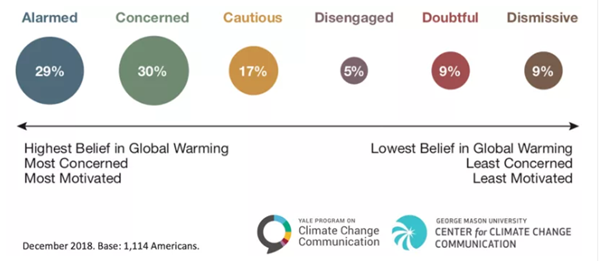
However, the psychological benefits of an eco-friendly lifestyle can help combat the growing eco anxiety people face . Below mentioned are some benefits bundled with easy-to-follow practices.
6. Better coping mechanisms with eco anxiety
Although climate change is not in your control, there are ways you can contribute to save the planet. Remember a little effort goes a long way. So, instead of fretting and stressing over what could have been done, you can buckle up and take the initiative yourself. Gather yourself and prepare to bring about a change.
Make changes in your personal life by switching to eco-friendly accessories, food, activities and means of living. Acknowledge what harm you have inflicted and what best efforts you can do. Go easy on yourself and stay motivated and enthusiastic to make efforts.
7. Accountability to future generations (including your own kids)
“We do not inherit the earth from our ancestors, we borrow it from our children. ” ~ Native American Proverb
It’s easier to turn a blind eye than to be accountable for one’s actions. The climatic condition you are experiencing today was way better decades back. But our ancestors neglected the consequences and you might be doing the same.
Hence, think about what kind of a future you will give to the next generation. Your tiniest effort can make a huge difference. But when the cause is so massive and crucial the efforts should be big enough too. You can be conscious while giving your votes electing a person responsible for taking important decisions. Participate in elections and vote for the deserving candidate who you think would work for a better tomorrow.
8. Sense of accomplishment and pride in your efforts
It’s important to play your part to build a sustainable ecology of living. Through an eco-friendly lifestyle you get a sense of accomplishment in whatever you do for the climate. Save water, use less fuel, avoid food waste, and eliminate the causes of pollution contribute to cleaning the environment in the long run. You become self-aware of how natural resources are used and the lives associated with them.
You can stay involved in the fast-paced life if you want. But let’s not forget that you’ve already been through the traumatising phase of the COVID-19 pandemic, which was Nature’s way of retaliation. Catastrophes, contagious and life-threatening diseases can lead human civilisation to extinction if we do not take necessary precautions. The unpredicted and uncontrollable natural disasters shake every being to their core. However, with an eco-friendly lifestyle, you get to maintain good health and a healthier surrounding for your family and loved ones.
9. Knowing that you’re caring for the planet the way it cares for you
An eco-friendly lifestyle makes you care for the planet. You can have fresh air to breathe, pure water to drink, and land to live in. But how humans thanked the planet–demolition of forests, polluting the sea, depleting the ozone layer and destroying every nature’s blessing–sad but true.
An eco-friendly lifestyle makes people more concerned about healing the planet, saving the scarcely available natural resources and cleaning the air, sea and land. It helps us adopt many ways to get a healthier environment.
10. Happiness and joy in the practice of simple living
Dr Brian Wind, a clinical psychologist, pinpointed some vital psychological benefits of an eco-friendly lifestyle. Sustainability living helps improve mindfulness. It makes people ponder on the environmental impact on day to day living. You ruminate less, become self-aware and focus better.
Secondly, it gives life a purpose. The closer you feel to reaching your goal, the more confident you become. Moreover, sustainable practices create a positive outlook on life. You eat organic food that provides essential nutrients to your body, indulge in physical activities and opt for natural-centric means of living.
Financial benefits of an eco friendly lifestyle
According to research, around 81% of people expect organizations to become environmentally conscious in their communications and advertisements. It highlights the potential of an eco-friendly business. Moreover, around 87% of consumers prefer buying products from brands that are aware of the environmental benefits.
For a sustainable ecosystem, the use of energy-efficient equipment, water-saving devices, and solar panels are not only cost-effective but more efficient than traditional energy use. Let’s delve deeper to learn about other financial benefits of an eco-friendly lifestyle.
11. Lower food costs

What you eat affects the planet. One of the major causes of forest demolition is to rear cattle and grow crops for livestock. Whereas, oceans are getting barren due to overfishing. Furthermore, food production does not only endanger wildlife it has other threatening influences as well. According to research, about a quarter of toxic greenhouse gases polluting globally are associated with food.
Instead of consuming animal products, eat plants. The livestock industry contributes to almost 15% of greenhouse gas emissions . Hence, switch to growing your own food. Eat fresh vegetables and fruits frequently. In this way, you can help reduce your carbon footprint.
12. More affordable travel
Sustainable travelling doesn’t mean clinging to animal backs. If you are willing to reduce the carbon footprint, become conscious of the damage your fuel-based vehicle is causing. That sense of accountability will naturally motivate you to make simple changes in your travelling habits.
Walk to nearby places, switch to electric cars, fly less often, and keep your vehicles fully maintained to avoid wasteful consumption of energy. The European Union voted Slovenia as Europe’s greenest city. With the development of certification programs and sustainability tools, the city is building efficient public transport, cycling infrastructure, and pedestrians and educating its community to stay committed to protecting green areas.
13. Lower energy bills

Renewable energy sources not only reduce carbon footprint but lowers your bills. It’s best to use Solar panels that help convert sun rays into electricity and solar heating systems that provide hot water and heating throughout the year. Other sources of sustainable energy include air source heat pumps, wind energy, biomass systems, and hydroelectric systems. Hence, get energy-efficient home appliances to cut down your bills and make the environment safer.
14. Less money spent on clothing, home decor, and household items
One biggest change an eco-friendly lifestyle makes is encouraging people to shop less money on clothes and accessories. However, it doesn’t mean to kill your wishes if you fancy embellished clothes or tempting food. It’s about going for vegan diet plans, recycled products, and organic food. Brands like Earth Hero, Eco Roots , and Made Trade offer sustainable products to its consumers.
15. Investing in the businesses of the future
Invest in business with a sustainable motto for a greener future. Hunt for such business avenues that are environmentally conscious and aim to bring about a huge change in the world.
You work so passionately but breathe in the polluted air, live on a catastrophic land and survive on contaminated resources. What’s the point of such living? Hence, focus on creating such business goals that do make good returns but not at the cost of harming the planet. You can innovate fuel-efficient and energy-efficient products, electronics and machinery or else provide water-saving solutions to people.
Final thoughts
You are consciously aware of how grim the climate condition is and by opting for an eco-friendly lifestyle you sure can make a huge impact on saving the planet. No need to drastically transform your life, initiate with little effort. Make your aim to go green.
Ayesha Sameen
Doable eco activism newsletter.
Get suggested actions every Saturday!
Have You Read…

15 Zero Waste Toothpaste Options for Newbies

17 Ways to Shop Less (That You Haven’t Tried Before)

Why Having a Zero Waste Period Isn’t Impossible (& 7 Products to Try)
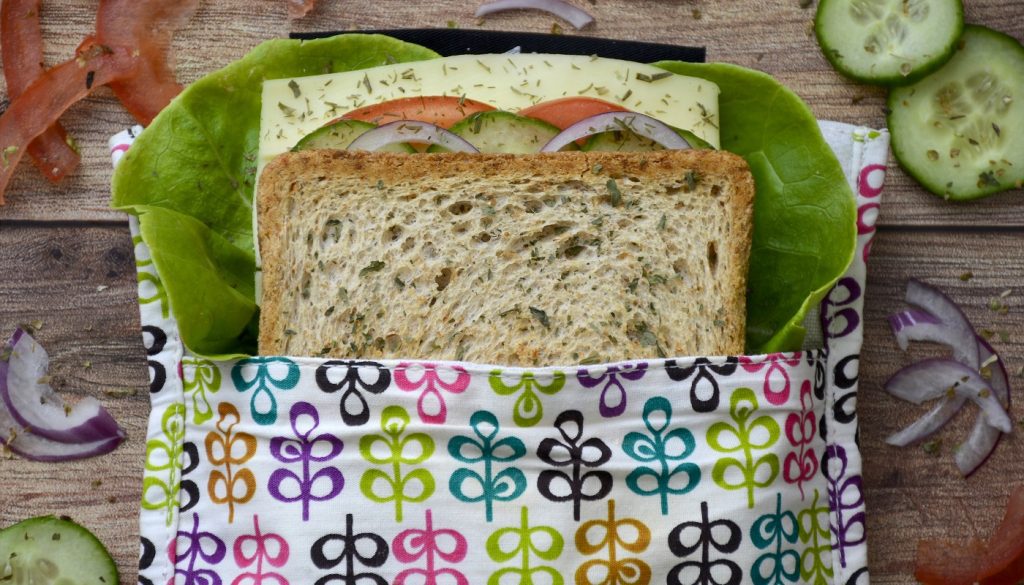
How to Cook and Pack a Zero Waste Lunch

25 Eco Trends You Can Actually Do (Even If You’re Busy)

10 Affordable Eco Friendly Kitchen Products (Plus One Splurge)
- EssayBasics.com
- Pay For Essay
- Write My Essay
- Homework Writing Help
- Essay Editing Service
- Thesis Writing Help
- Write My College Essay
- Do My Essay
- Term Paper Writing Service
- Coursework Writing Service
- Write My Research Paper
- Assignment Writing Help
- Essay Writing Help
- Call Now! (USA) Login Order now
- EssayBasics.com Call Now! (USA) Order now
- Writing Guides
Being Eco Friendly (Essay Sample) 2023
Being eco friendly.
How Can I Get Essay For Free and Is it realistic to expect a low-cost, High-Quality Essay from a Cheap Paper Writing Service ?

Eco-friendly or environment friendly is a marketing and sustainability word that refers to laws, goods and services, policies and guidelines claiming minimal, reduced, or no damage upon the environment or eco systems. Organizations are using these ambiguous words in promoting goods and services, sometimes with extra, more precise certifications like ecolabels. One’s overusing can be mentioned as green washing. ISO 14024 and ISO 14020 have been developed by the International Organization for standardization to establish procedures and principles for environmental declarations and labels that eco labelers and certifiers should be following. In discrete, these standards are relating to the avoidance commercial dispute of interest, using of accepted test approaches and sound scientific systems, transparency, and openness in the laying of the standards. Being eco friendly becomes more and more significant. The main intention of being eco friendly is not to create damage to the environment, and preventing as much damage as possible from happening to the environment through one’s interactions with it. This paper seeks to describe being eco friendly and its significance in the environment.
The easiest way of defining what being eco friendly refers to is by saying that, it is the practice of living with the intention of protecting the environment. One can start being eco friendly by being aware how one’s choices will impact the environment. This involves-to strive in supporting others working to live and produce sustainable and eco friendly societies, to discover the span of one’s carbon foot mark and the act of lessening that foot mark on the surrounding, and to learn consuming items causing less environmental damage. One sees that, the initial step is about one acting immediately in changing the manner one is consuming things in life. This means the change of practice of how one is driving, the kinds of packages one is using, how one is disposing waste and how one is using natural resources. The next step is looking at the span of one’s carbon foot mark that one may not be able to adjust such as to live in a house, driving the car or the kind of job one has and act working the duty of lessening the mark to the best of one’s capacity. The final step is involving actively finding links with alternative co friendly individuals, business, societies, and choosing to support and network them to make more sustainable life.
There are more steps of being eco friendly. One is conserving water and electricity. Producing electricity and fresh water, it takes energy to do this. This is as simple as switching off the lights when not using it, use of maximum daylight, fix of leakages, proper insulation, install of energy effective windows, and purchase of energy effective devices which can minimize one’s daily consumption of energy. Next is planting more trees because one gives timber, fruits, oxygen, preventing soil erosion, controlling floods, and providing shelter to wildlife. Third is buying energy effective products with five star grading that prove to be eco friendly by consuming less energy. Fourth is buying recycled products when visiting grocery shops to purchase things that will make one to be eco responsible.
Conclusively, eco-friendly or environment friendly is a marketing and sustainability word that refers to laws, goods and services, policies and guidelines claiming minimal, reduced, or no damage upon the environment or eco systems. Being eco friendly becomes more and more significant and the main intention of being eco friendly is not to create damage to the environment, and preventing as much damage as possible from happening to the environment through one’s interactions with it. The steps of being eco friendly can be summed up as conserving water and electricity, planting more trees, buying energy effective products, and buying recycled products.

- Junk Removal
- Donation Pickup
- Eco-Friendly Moving Made Easy: How To Reduce, Reuse, And Recycle During Your Move

Eco-Friendly Moving Made Easy: How to Reduce, Reuse, and Recycle During Your Move
Moving can be a stressful event, but it doesn't have to be an eco-nightmare. If you're preparing for a big move, why not make it an eco-friendly one? With just a few thoughtful changes, you can turn your moving process into a sustainable moving adventure. Here’s how you can embrace the mantra of reduce, reuse, and recycle to make your move kinder to the planet.

Reduce: Simplify Your Move
The first step to an eco-friendly moving experience is to reduce the amount of stuff you have to move. Less stuff means fewer resources used for packing, transportation, and storage. Here’s how to cut down:
1. Declutter Ruthlessly : Before you even think about packing, go through all your belongings and ask yourself, “Do I really need this?” Separate items into categories: keep, donate, sell, and recycle. Not only will you have fewer things to move, but you'll also feel lighter and more organized.
2. Digital Over Paper : Reduce the amount of paper you use by opting for digital documents. Scan important papers and store them on a cloud service. You’ll save trees and reduce the weight of your moving boxes.
3. Energy-Efficient Planning : Plan your move to minimize trips. Combine errands, pick the most fuel-efficient routes, and consider renting a fuel-efficient or electric moving vehicle if possible.

Reuse: Make the Most of What You Have
Reusing items is a cornerstone of sustainable moving. It saves resources and cuts down on waste. Here are some creative ways to reuse during your move:
1. Repurpose Packing Materials : Instead of buying new packing supplies, use what you already have. Towels, blankets, and clothing can all double as packing materials. They’ll protect your fragile items just as well as bubble wrap.
2. Borrow or Rent Moving Equipment : Rather than purchasing boxes and equipment, ask friends or family if they have items you can borrow. Alternatively, check if your local moving company offers rentals for reusable moving boxes and supplies.
3. Upcycle Old Items : Transform old items into something new and useful. For example, an old dresser can be repurposed as a storage unit in your garage or an outdoor plant stand.
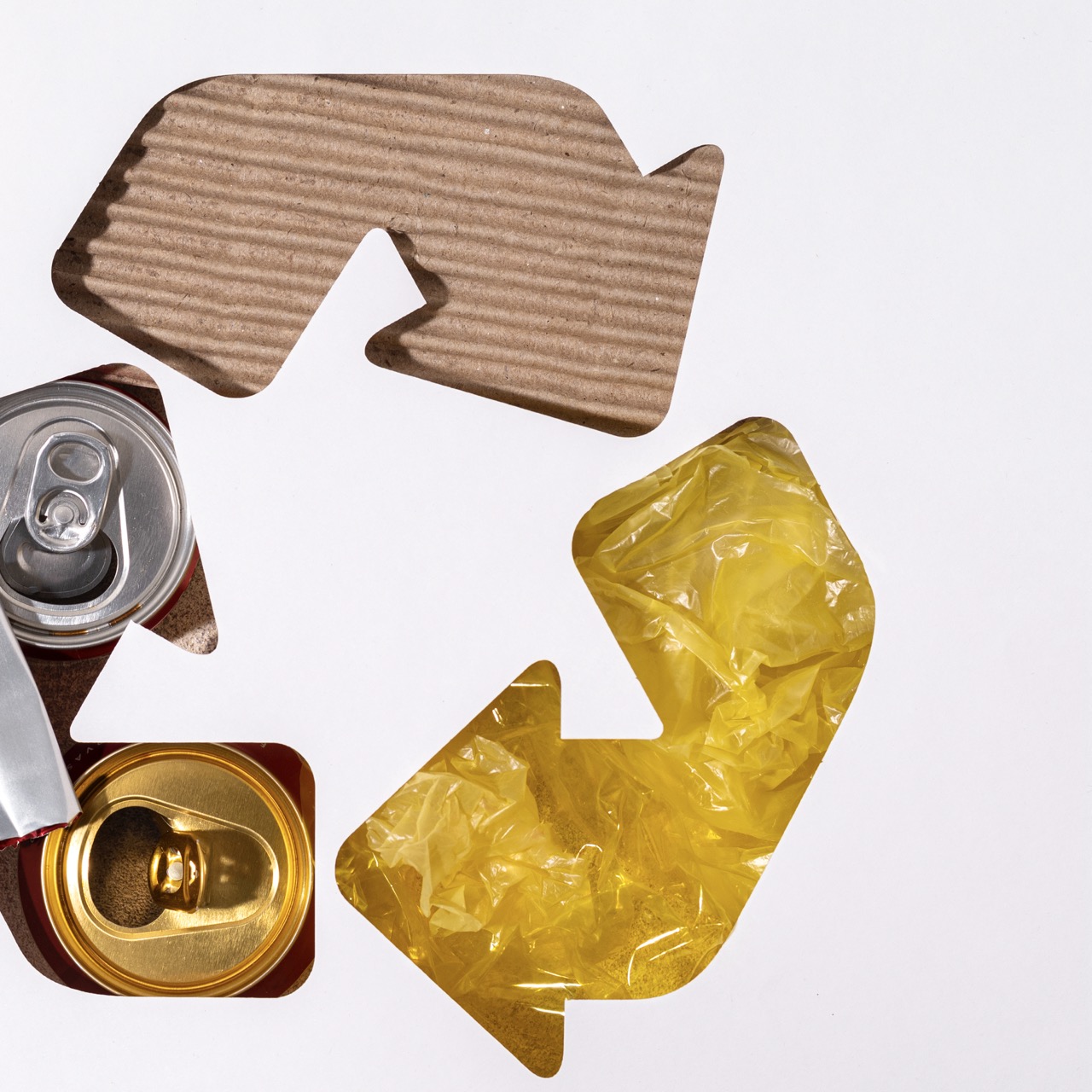
Recycle: Give New Life to Old Items
Recycling is the final piece of the eco-friendly moving puzzle. It ensures that materials are reprocessed and made into new products, reducing the need for virgin resources.
1. Proper Disposal of Electronics : Old electronics shouldn’t end up in a landfill. Take them to a certified e-waste recycler who can safely dismantle and recycle the components.
2. Recycle Moving Boxes : Once you’ve unpacked, don’t toss those boxes! Flatten them and take them to a recycling facility, or better yet, pass them on to someone else who’s moving.
3. Compostable Packing Peanuts : If you need to use packing peanuts, opt for the compostable variety. These are made from biodegradable materials and can be composted after use.
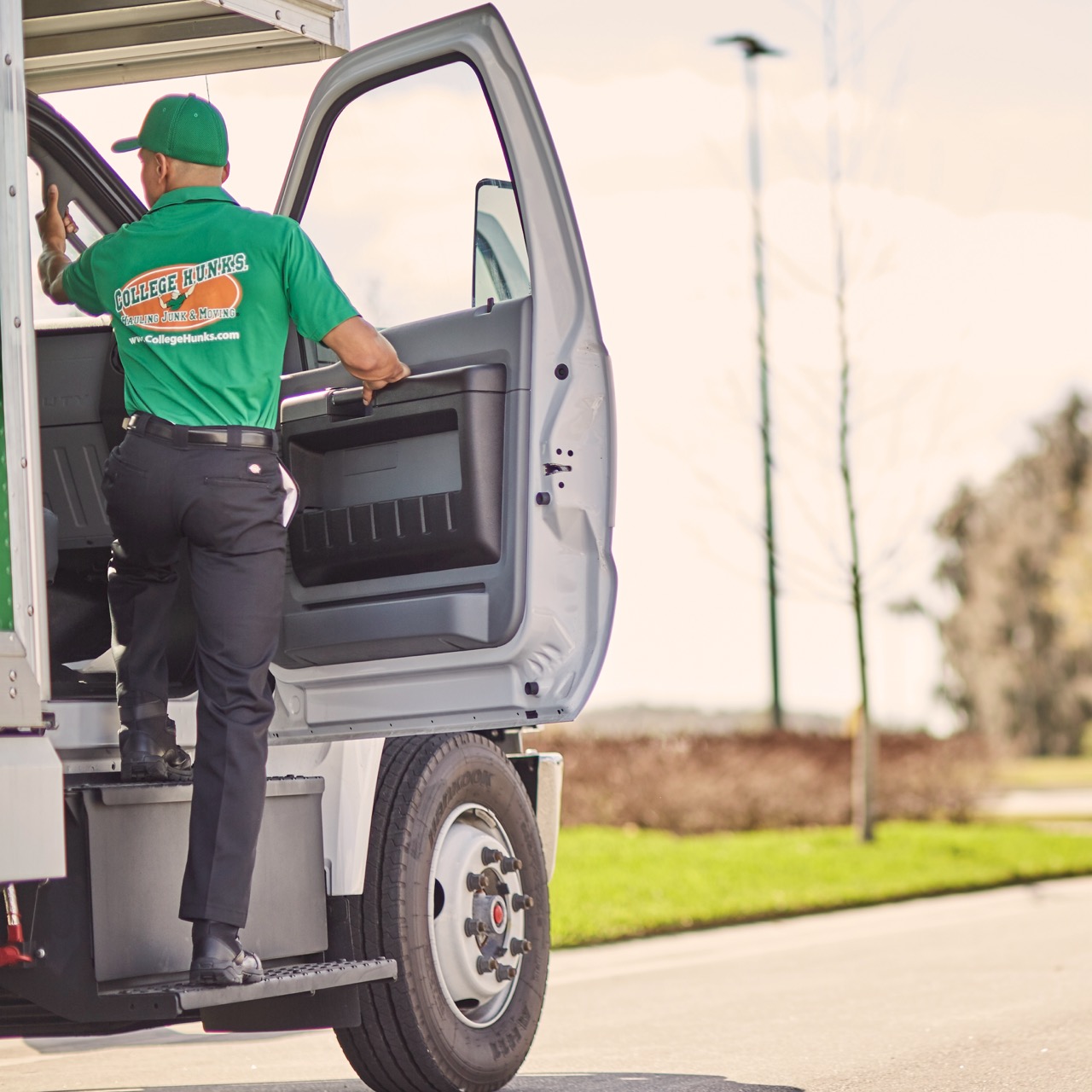
Partner with an Eco-Friendly Moving Company
When you choose a moving and junk removal company that prioritizes sustainability, you're taking a significant step towards an eco-friendly move. Thanks to companies like College HUNKS Hauling Junk & Moving , you can dispose of your excess stuff in a way that’s both convenient and sustainable. We understand the impact of waste reduction on our environment. That is why our company is committed to recycling and donating as much as possible.
Let’s make every move an opportunity to reduce, reuse, and recycle, ensuring a healthier planet for all. Happy eco-friendly moving! 🌿
Share this page on social media.
- Share this page on Facebook
- Share this page on Twitter
- Share this page on Pinterest
- Share this page on LinkedIn
- Share this page via email
Determinants of the Price Premium for Eco Vessels
30 Pages Posted: 29 Jun 2024
Ioannis Moutzouris
Bayes business school, nikos c. papapostolou.
Cass Business School, City, University of London
Malvina Marchese
Cass Business School, City, University of london
Michael Tamvakis
City University London - The Business School
University of Sussex
Shipping companies face the trilemma of investing in cheaper but more polluting conventional vessels, in more expensive but eco-friendly ones or postponing their investment. We quantify the price premium paid for eco-friendly vessels and investigates its determinants. The results indicate that eco vessels trade at an average premium of 25% compared to their conventional counterparts, while the corresponding income premia are between 9% and 15%. The findings suggest that the price premium is time-varying and highly dependent on market conditions and indicate that price premia and fleet supply are strong drivers, with fuel costs and market liquidity having ambiguous effects. The magnitude and significance of these drivers vary based on the market state and segment. Overall, the paper documents the adverse effect that the current technological and regulatory uncertainty has on newbuilding investment and highlights the need for further policy intervention to reduce market uncertainty and encourage green investment.
Keywords: Asset Pricing, Sustainable Shipping, Maritime Decarbonisation, Vessel Prices, Net Zero Shipping, Price Premium
Suggested Citation: Suggested Citation
Ioannis Moutzouris (Contact Author)
Cass business school, city, university of london ( email ).
Faculty of Finance 106 Bunhill Row London, EC1Y 8TZ United Kingdom +44 (0) 207 040 8620 (Phone) +44 (0) 207 040 8681 (Fax)
HOME PAGE: http://www.cass.city.ac.uk/experts/N.Papapostolou
Cass Business School, City, University of london ( email )
106 Bunhill Row London, EC1Y 8TZ United Kingdom
City University London - The Business School ( email )
University of sussex ( email ), do you have a job opening that you would like to promote on ssrn, paper statistics, related ejournals, transport, energy & environment ejournal.
Subscribe to this fee journal for more curated articles on this topic
Transportation, Economy & Society eJournal
International trade & freight distribution ejournal.

IMAGES
VIDEO
COMMENTS
Adopting an eco-friendly lifestyle can help improve the environment. By reducing pollution, conserving natural resources, and preserving nature, we can ensure a healthier and happier life for future generations. ... 250 Words Essay on Eco Friendly Understanding Eco-Friendliness. Eco-friendliness represents a commitment towards preserving the ...
Sustainable Living: Eco-friendly living promotes a sustainable lifestyle, including recycling, water conservation, and renewable energy sources. For example, installing solar panels at home harnesses sustainable energy from the sun, reducing reliance on fossil fuels. Resource Conservation: Eco-friendly individuals understand the importance of ...
Long Essay on Eco-Friendly Living And Sustainable Development 500 Words for Kids and Students in English. "Treat the earth well. It was not given to you by your parents. It was loaned to you by your children.". The above quoted Kenyan proverb aptly marks the pungent need of the hour, i.e. 'sustainable development' and 'eco-friendly ...
Tip 9: Go for Electric Vehicles. Diesel and petrol cars add to global warming by releasing a lot of CO2. In 2019, transportation caused 27% of the UK's emissions, and out of this, 91% was from vehicles on roads. Incorporating electric cars into our daily lives is a great way to embrace eco-friendly lifestyles.
Sustainable living and lifestyles for the first time appear in the Sustainable Development Goals (4 Education and 12.8 Responsible Consumption). UN Environment Programme is at the forefront of looking into what sustainable lifestyles are and how decision-making can be better harnessed for sustainability. How can governments and business better ...
Many strategies exist for reducing carbon emissions and leading a more eco-friendly lifestyle. One of the best ways to start living sustainably is by shifting to carbon-neutral transportation options such as electric vehicles or bicycles. If you don't have access to these types of transportation, consider carpooling with friends or family ...
1. Rethink Your Eating. Look beyond meal-to-meal concerns with weight. Aim to eat consciously and selectively in keeping with the nourishment you want to take in, the energy and personal gifts you want to contribute, and the influence you want to have on the world around you.
An eco-friendly environment, also known as a sustainable or green environment, is one where the natural resources are conserved and utilized efficiently, ensuring the continuity of life for future generations. The concept of an eco-friendly environment is a response to the alarming rate of environmental degradation due to human activities.
Sustainable living means understanding how our lifestyle choices impact the world around us and finding ways for everyone to live better and lighter. Applying a 'people lens' to sustainability is new, timely and opportunities are great. Sustainable living and lifestyles for the first time appear in the Sustainable Development Goals (4 Education and 12.8 Responsible Consumption). UN ...
By incorporating eco-friendly habits into our daily lives, we can improve our personal quality of life, from enjoying cleaner air and water to fostering a deeper connection with nature.
Other habits to get you started on conserving water: When you're shaving, brushing your teeth or doing the dishes, don't keep the faucet running the entire time. If your shower takes a while ...
Adopting an eco-friendly lifestyle helps preserve the environment for future generations. 250 Words Essay on Lifestyle for Environment Introduction. The environmental crisis is a pressing issue that requires immediate attention. One effective way to combat this is by adopting a lifestyle that is conducive to the environment.
This practice reduces the energy spent on livestock rearing and gives us more room for environmentally greener activities. 5. Reduce water waste. Living an eco-friendlier lifestyle also involves a reduction in water usage. For example, you can invest in a low-flow showerhead to reduce water usage during your baths.
Waste Reduction and Recycling. Taking care of the garbage problem is essential to developing an eco-friendly lifestyle. By adhering to the reduce, reuse, and recycle principles, people may lessen their influence on the environment. A circular and sustainable strategy for resource usage includes selecting items with little packaging, using ...
A more sustainable lifestyle is possible, even with certain limitations (credit: j.chizhe on Shutterstock) Consumption patterns. The first challenge households face in achieving more sustainable ...
Use cloth napkins, cloth diapers, cloth rags, rechargeable batteries, durable razors, and refillable coffee thermoses for take-out coffee. 9. Kick the bottled water habit. Americans consumed 13.7 ...
Essay On Eco Friendly Environment. 1408 Words6 Pages. The organic, eco-friendly life around the world: present and future As the environmental problems are becoming more and more serious, people have started to know the importance to have an organic, eco-friendly life. Eco-friendly has already become a new key word around the world which ...
One way to be eco-friendly is by embracing sustainable consumption. This involves purchasing products that are sustainably produced and have minimal environmental impact. For instance, buying locally produced goods reduces the carbon footprint associated with transportation. Additionally, opting for products with less packaging can ...
Psychological benefits of an eco friendly lifestyle. 6. Better coping mechanisms with eco anxiety. 7. Accountability to future generations (including your own kids) 8. Sense of accomplishment and pride in your efforts. 9. Knowing that you're caring for the planet the way it cares for you.
Abstract. Simplicity is generally considered an important characteristic of the environmentally friendly lifestyle. This article questions this tenet. Nine dimensions of simplicity are proposed ...
habit.2,3 Therefore, the LiFE 21-Day Challenge is intro-duced to enable citizens to do one simple eco-friendly activity/day for 21 days and subsequently adopt an eco-friendly lifestyle. LiFE and its integration with other initiatives LiFE is not only to adopt a zero-carbon lifestyle but to make sustainable choices in day-to-day life, with the
Eco-friendly or environment friendly is a marketing and sustainability word that refers to laws, goods and services, policies and guidelines claiming minimal, reduced, or no damage upon the environment or eco systems. Organizations are using these ambiguous words in promoting goods and services, sometimes with extra, more precise certifications ...
Recycle: Give New Life to Old Items. Recycling is the final piece of the eco-friendly moving puzzle. It ensures that materials are reprocessed and made into new products, reducing the need for virgin resources. 1. Proper Disposal of Electronics: Old electronics shouldn't end up in a landfill. Take them to a certified e-waste recycler who can ...
We quantify the price premium paid for eco-friendly vessels and investigates its determinants. The results indicate that eco vessels trade at an average premium of 25% compared to their conventional counterparts, while the corresponding income premia are between 9% and 15%.